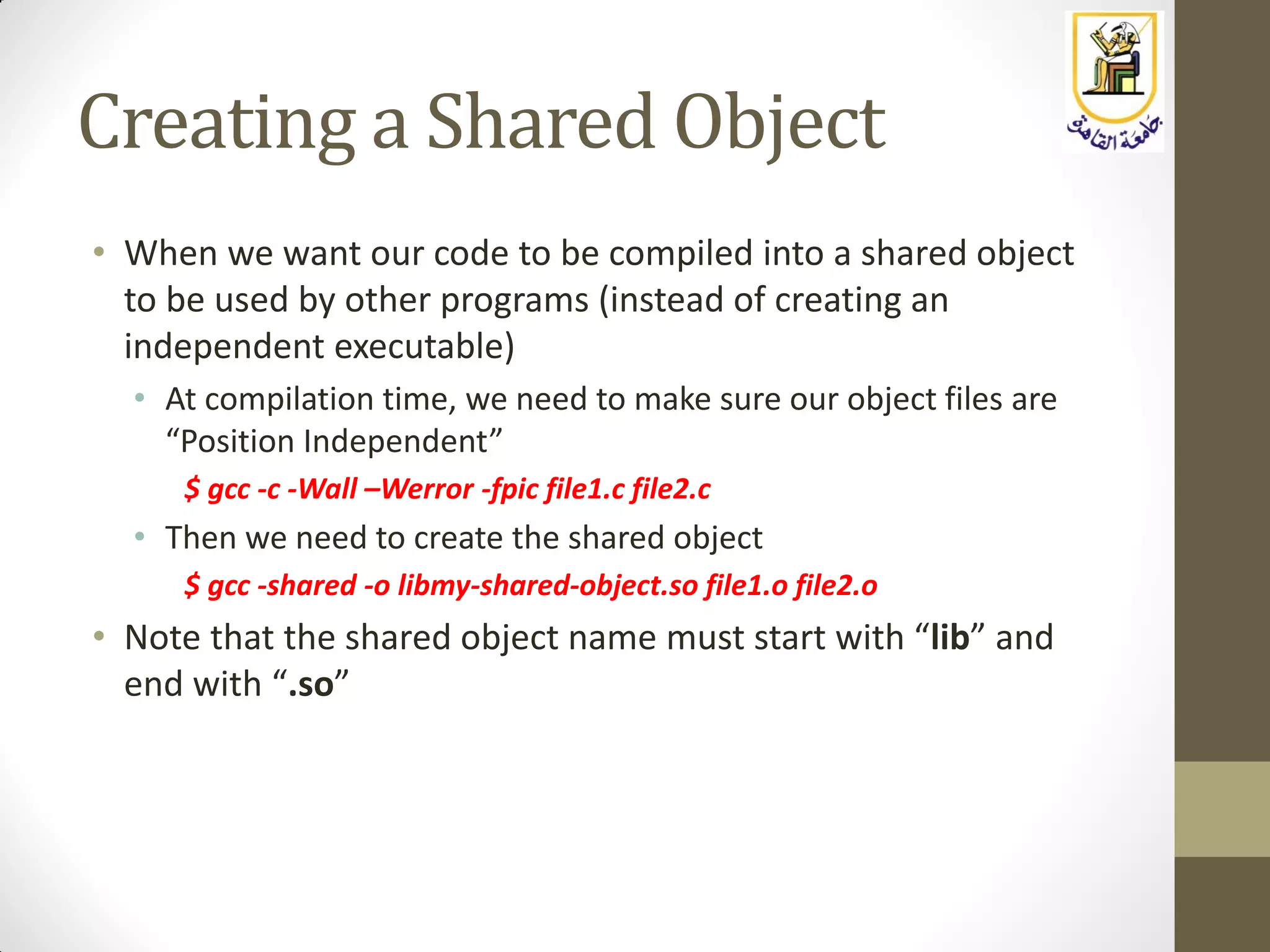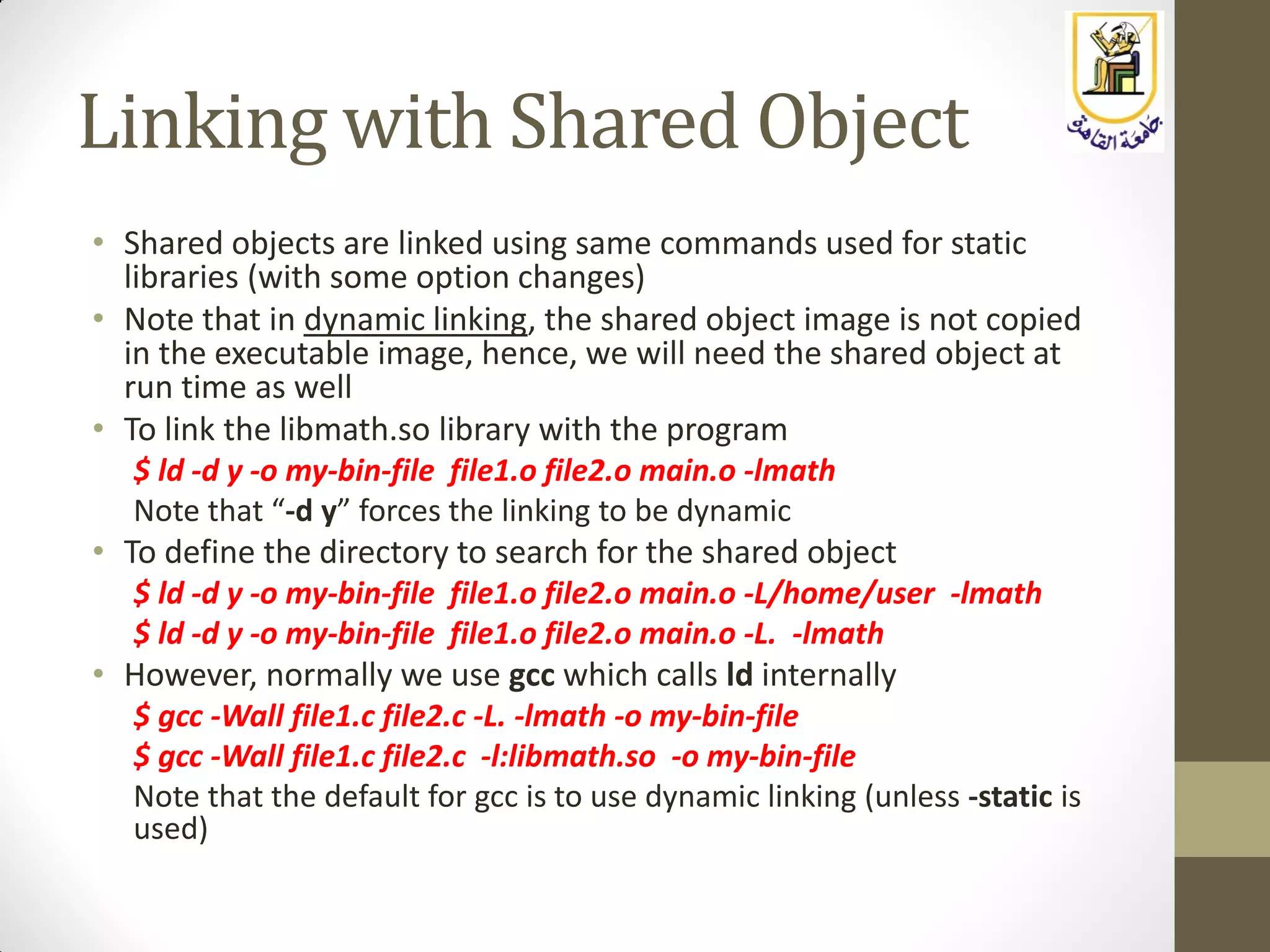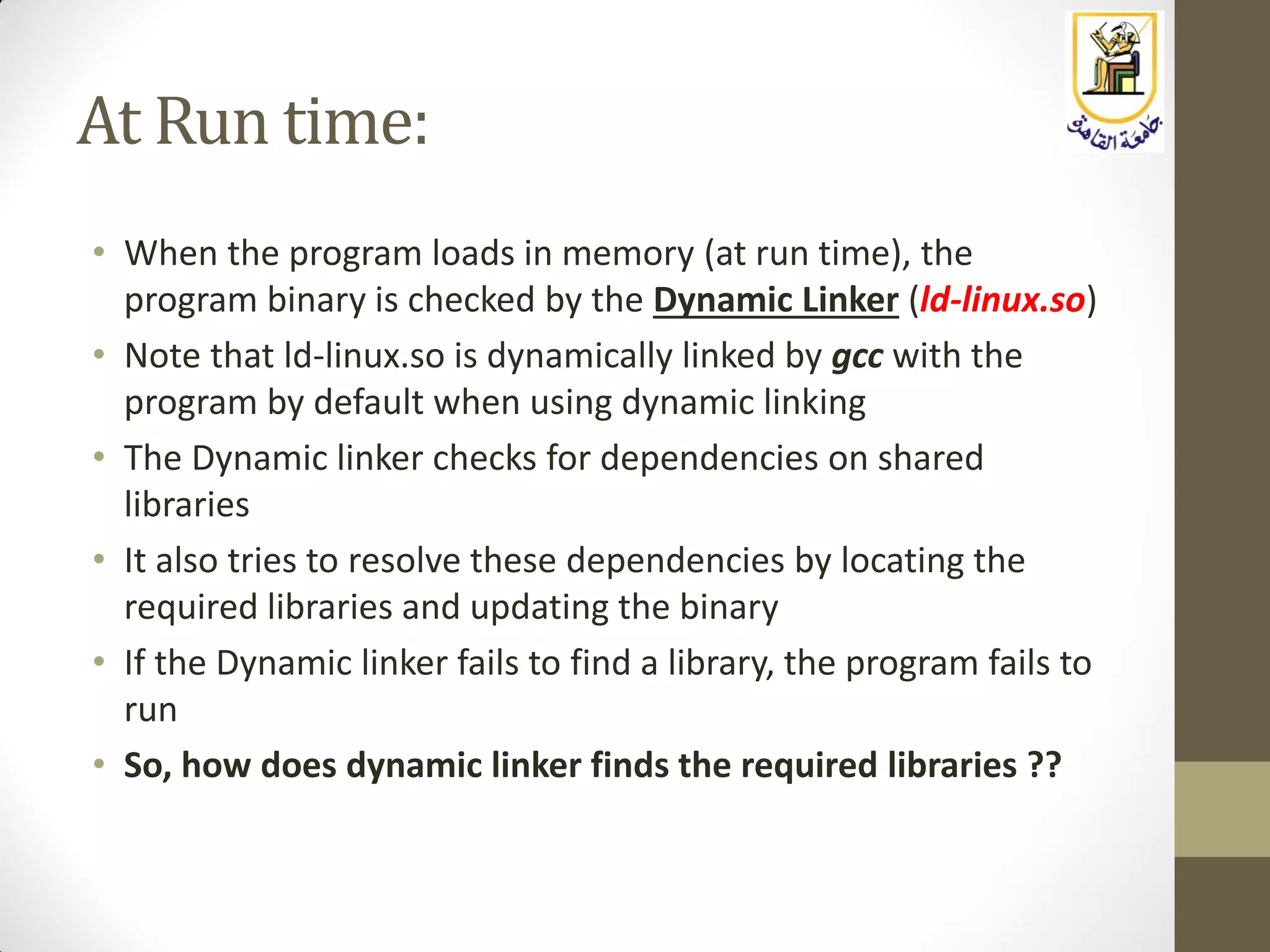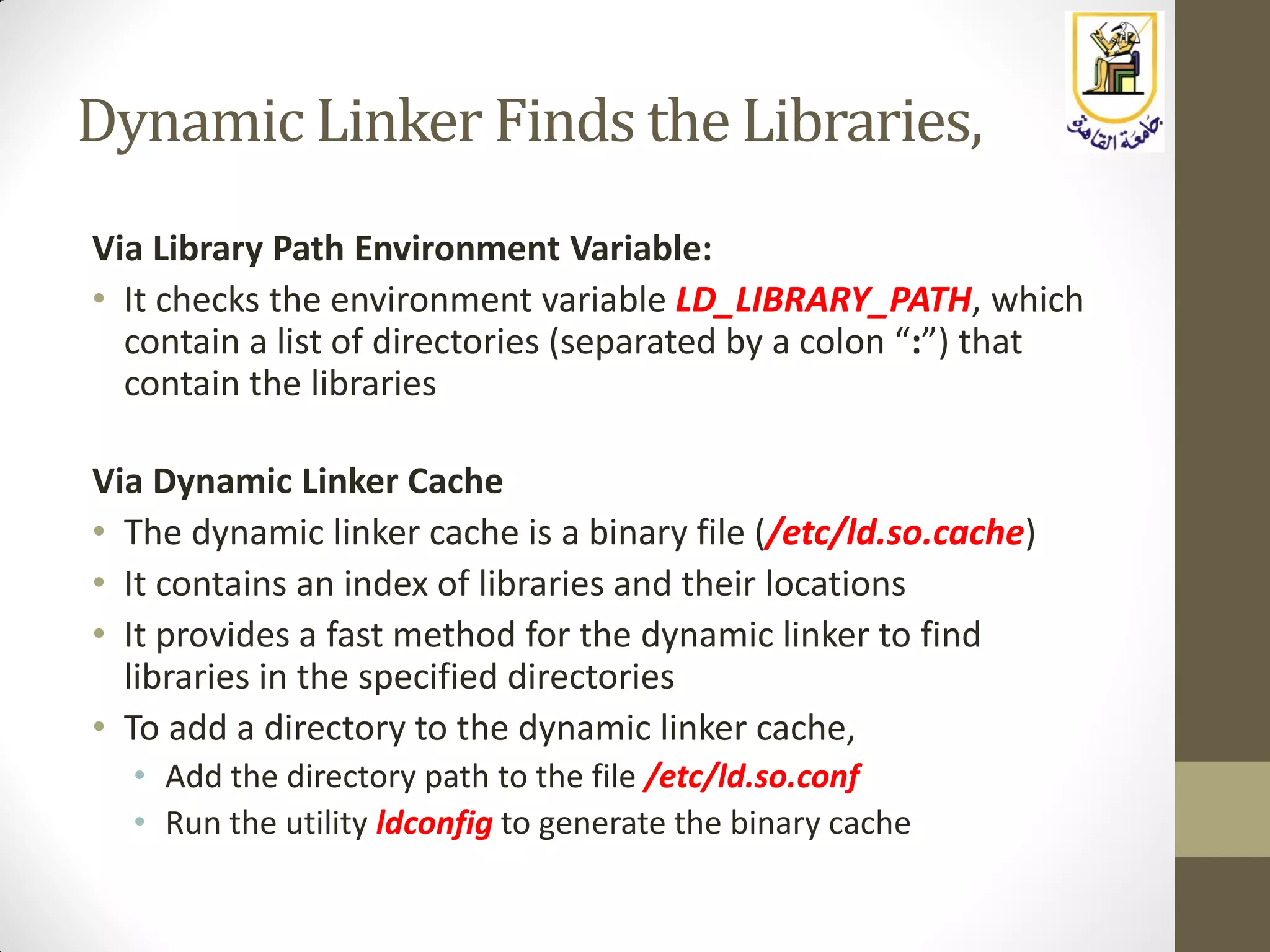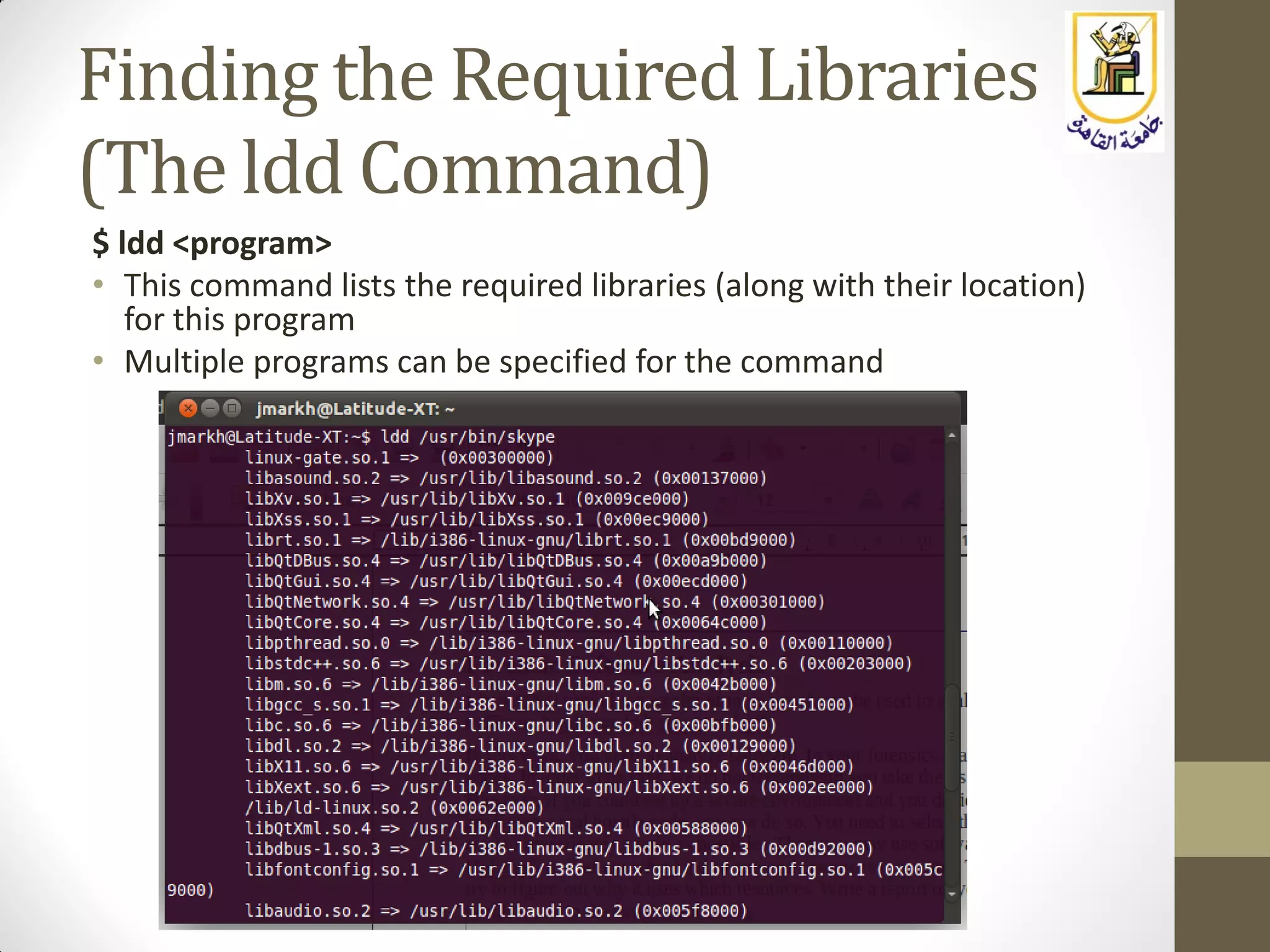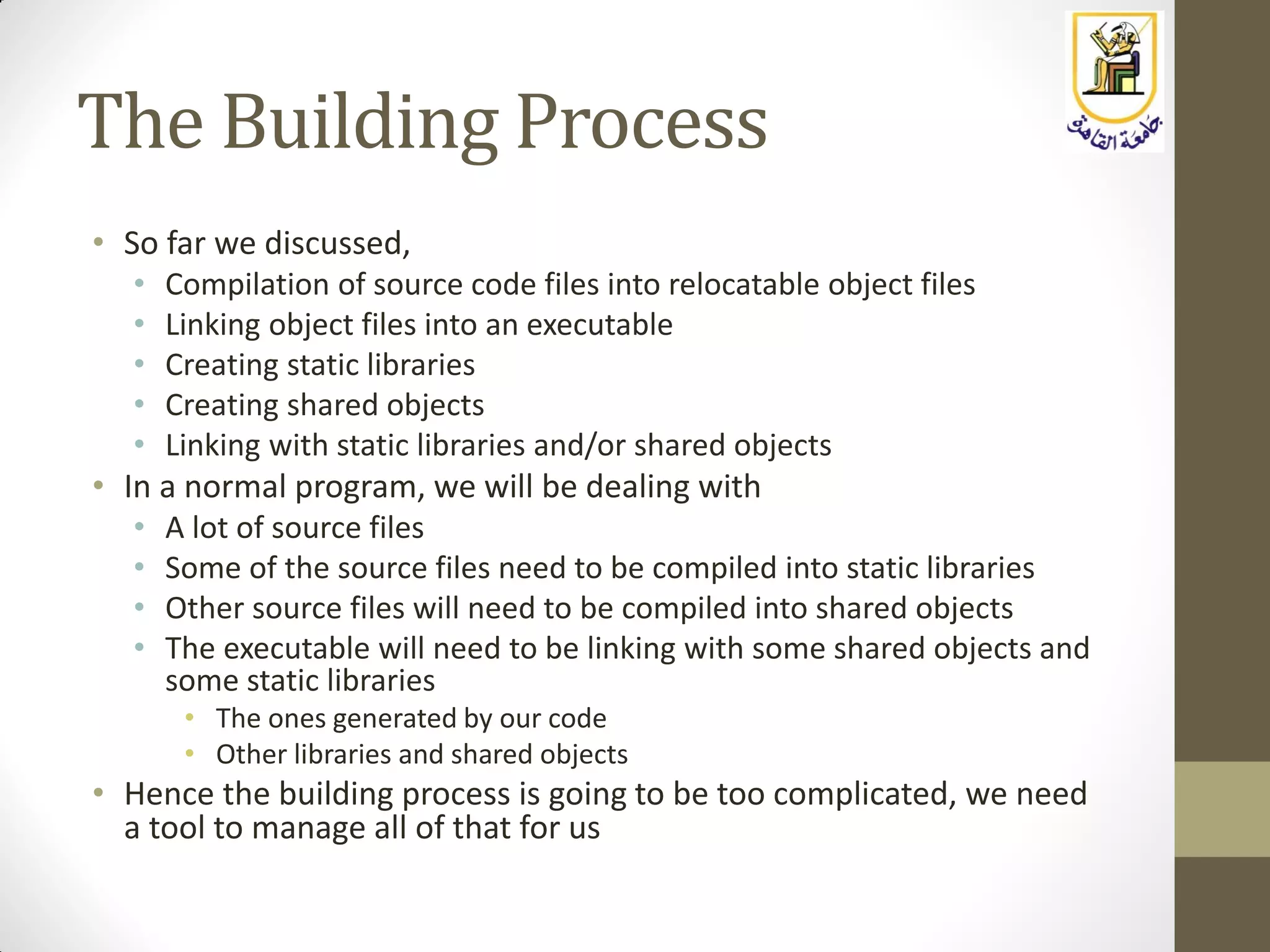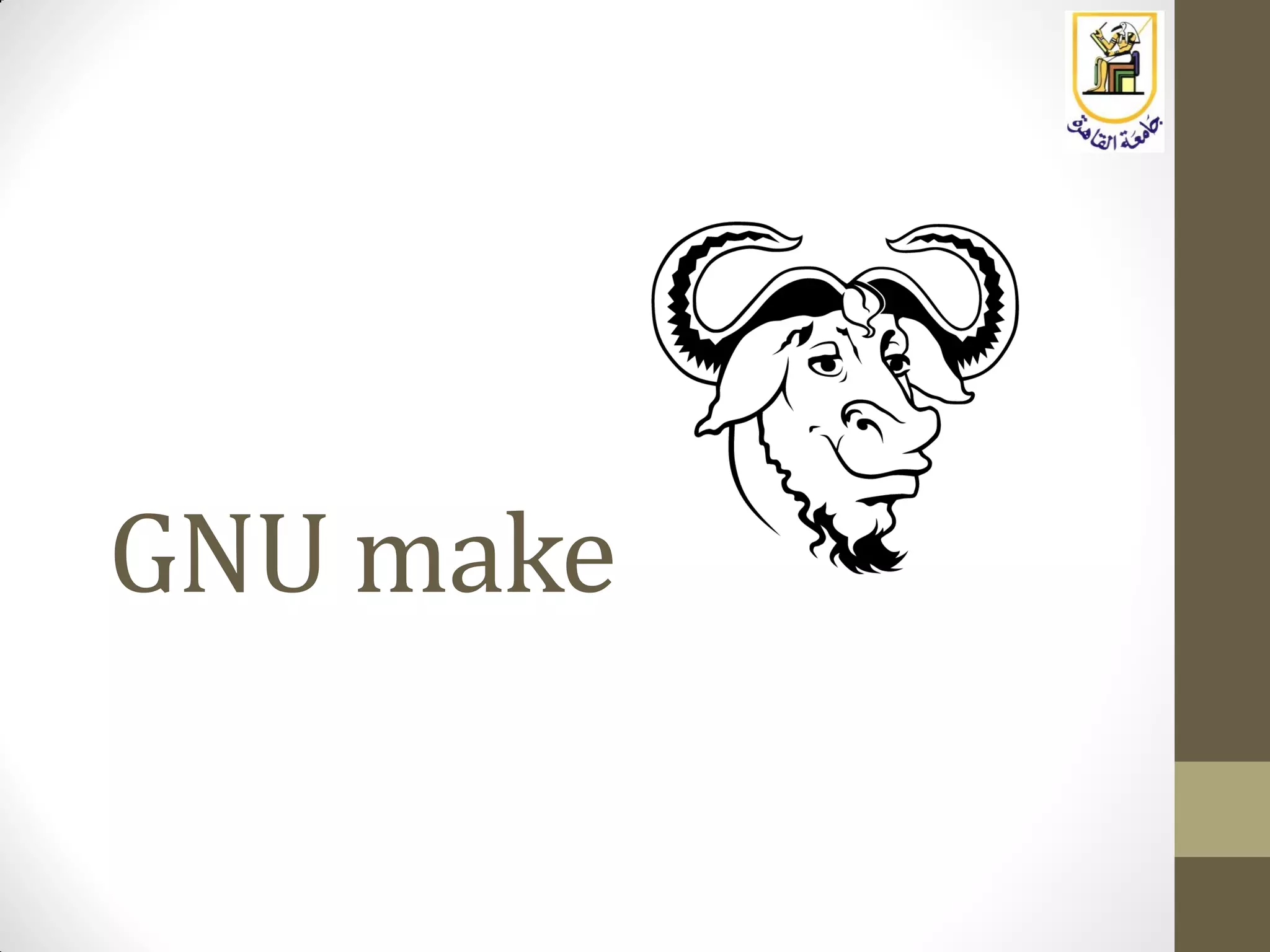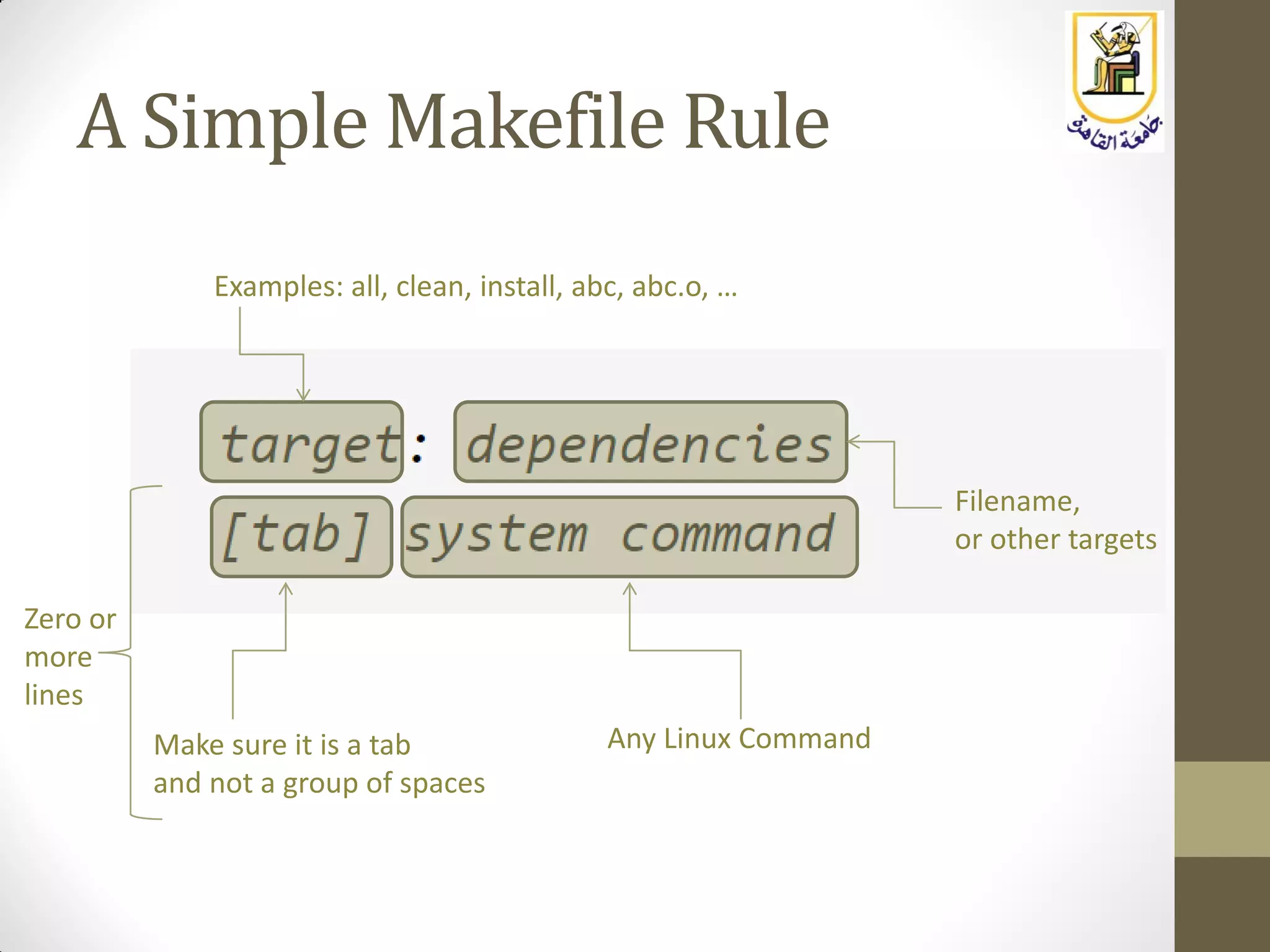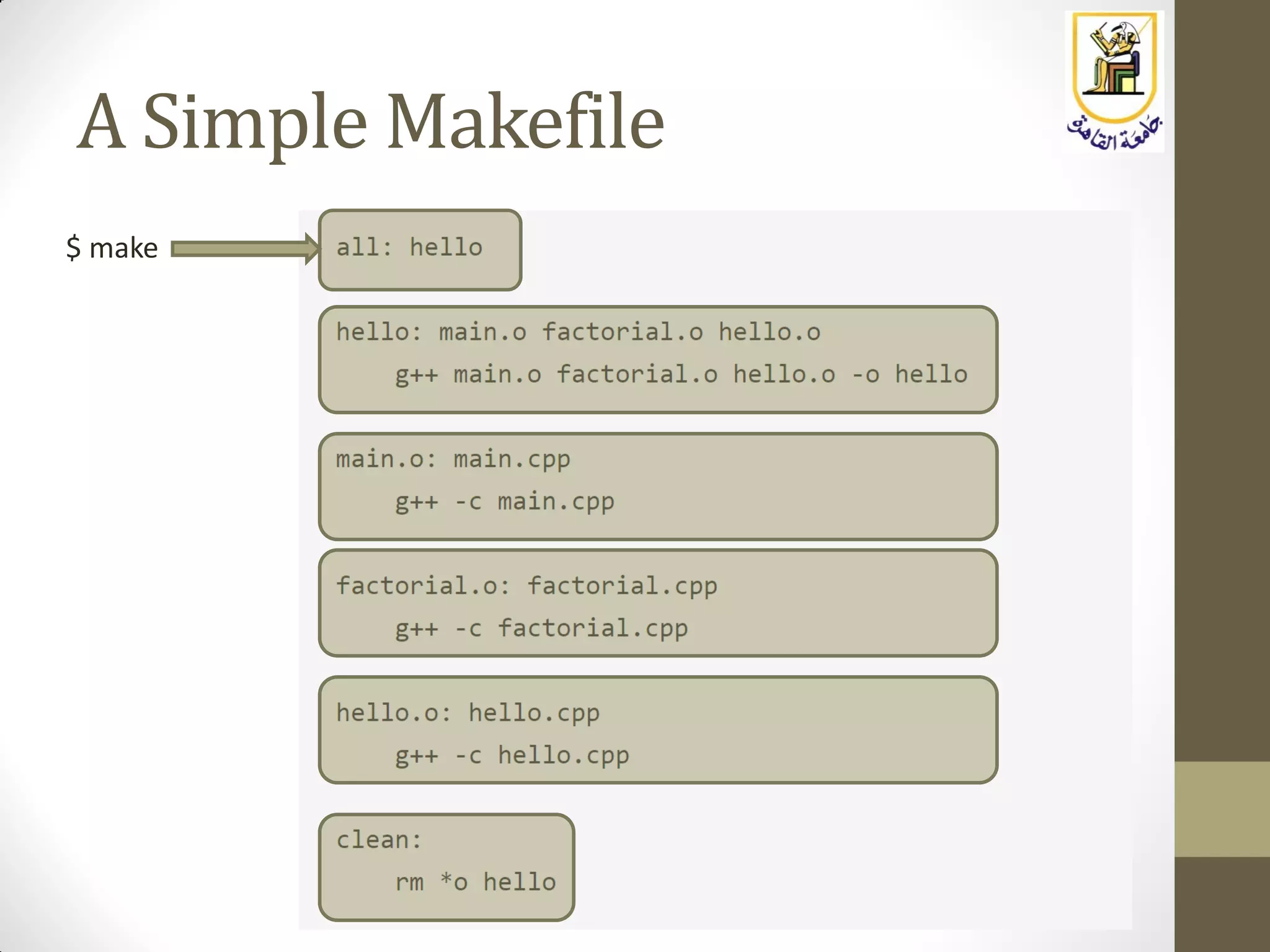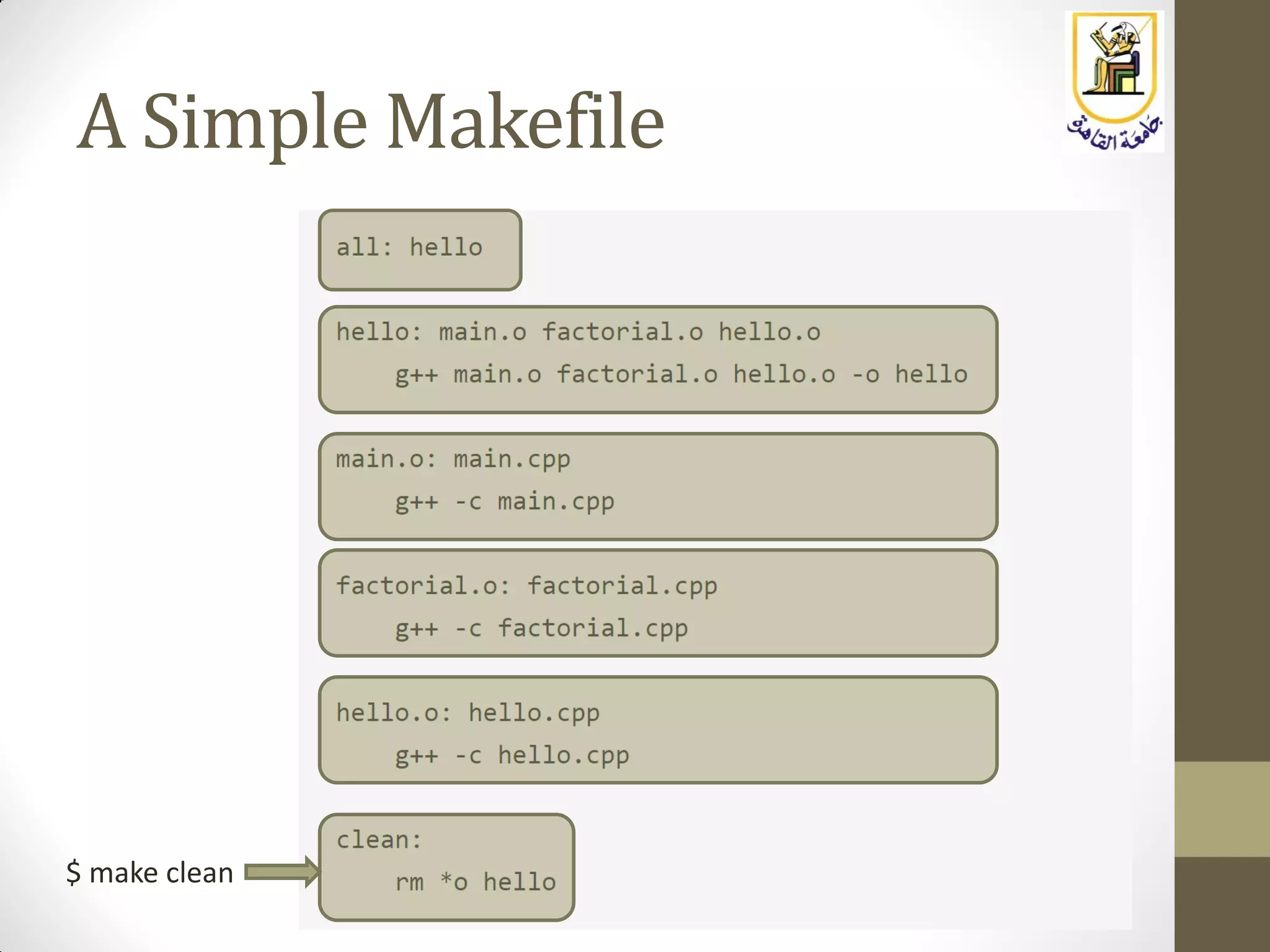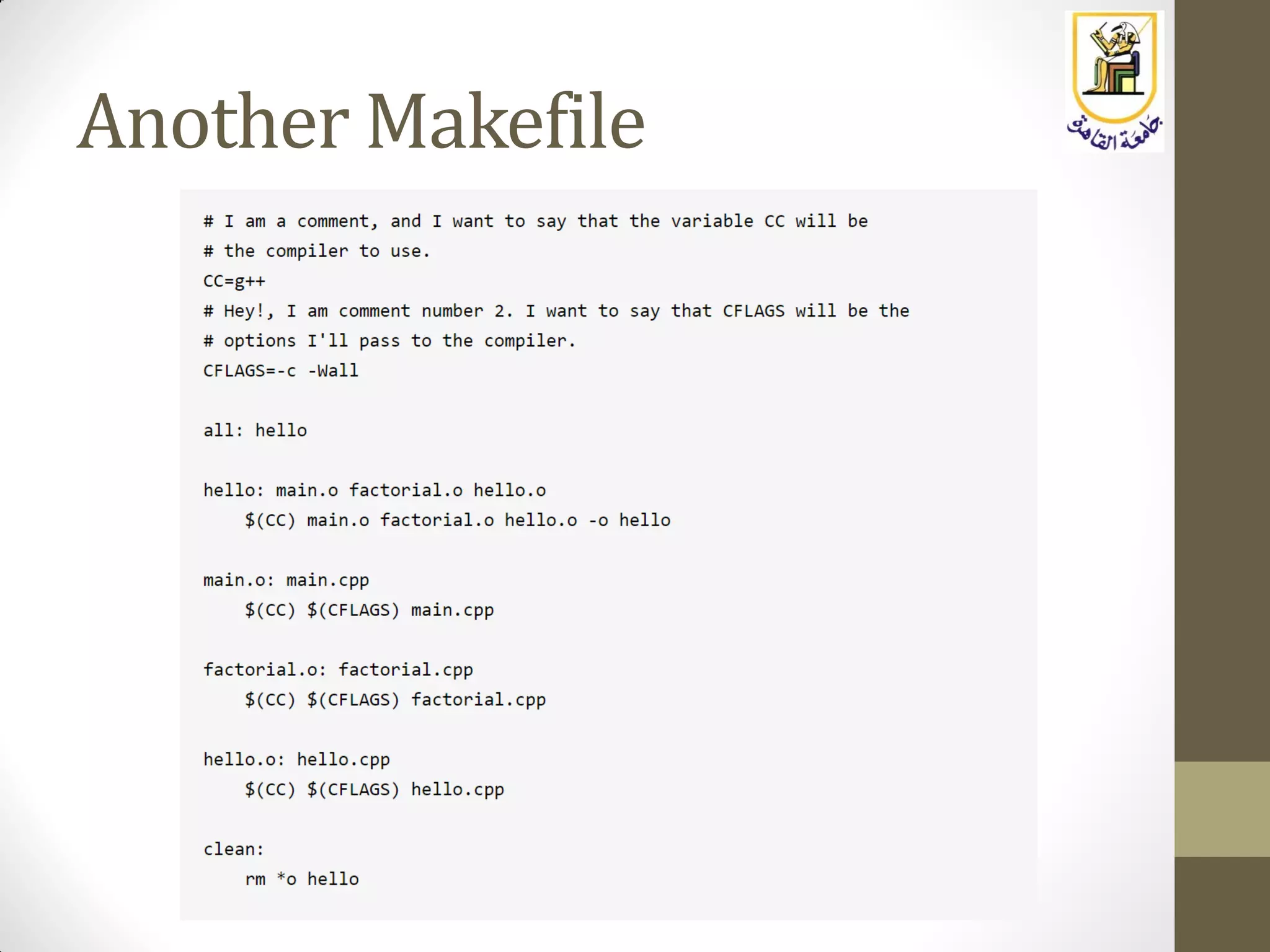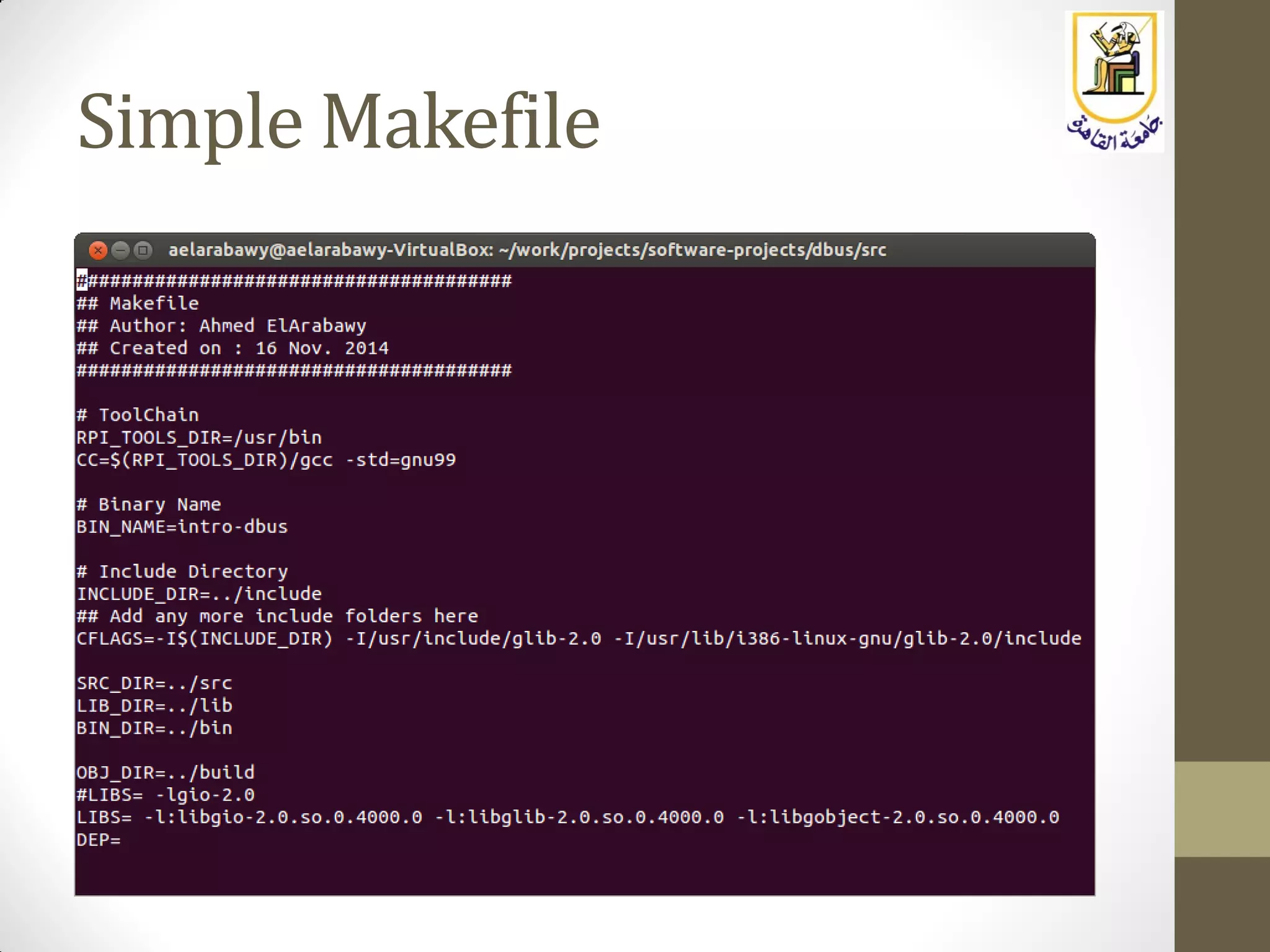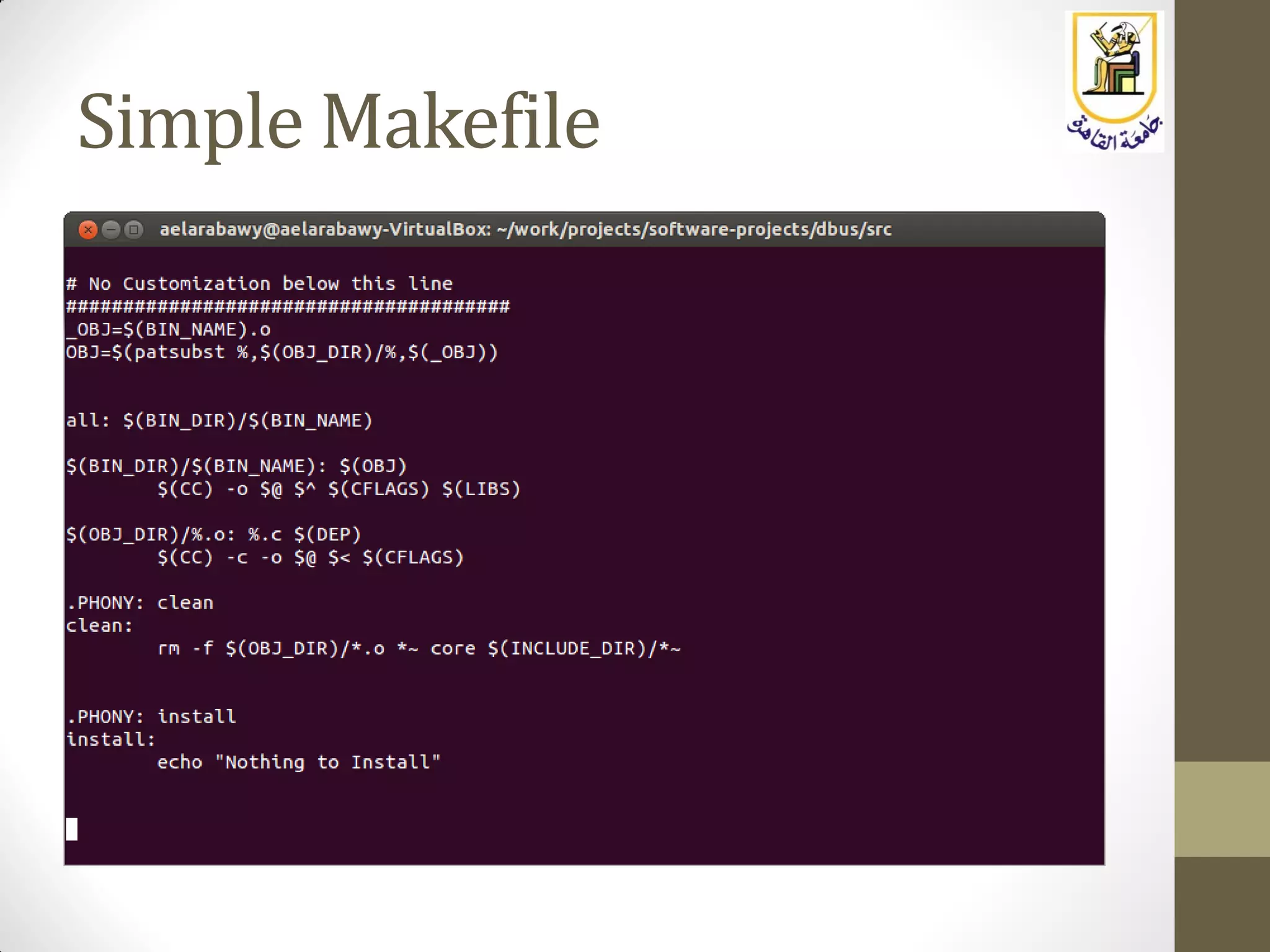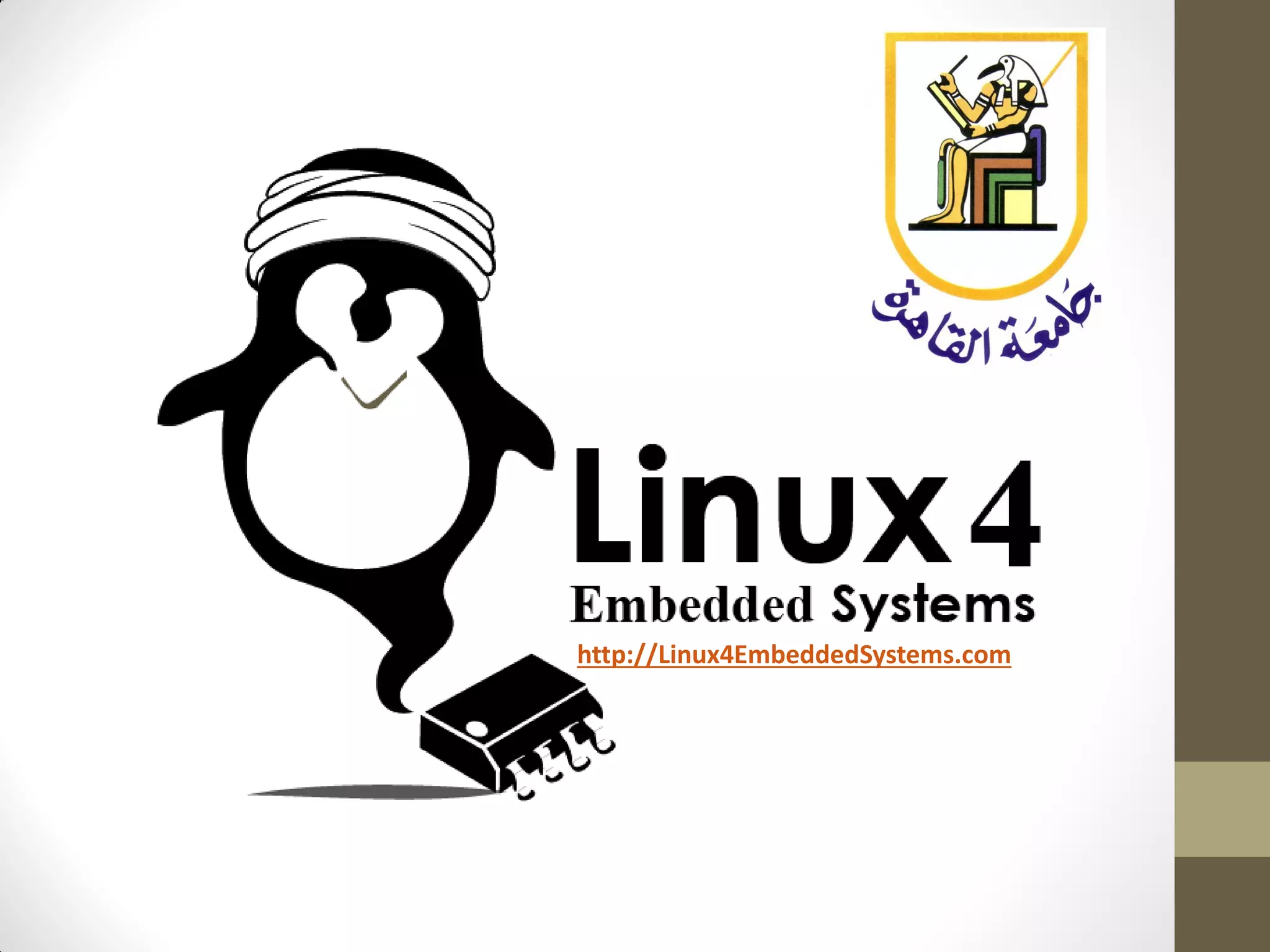The document discusses Linux toolchains used for embedded systems development. It describes the main components of the GNU toolchain including gcc (compiler), ld (linker), ar (library archiver) and other tools. It explains the compilation process from source code to executable, use of static and dynamic libraries, and how the dynamic linker locates libraries at runtime. Commands for building, linking and debugging programs are also covered.

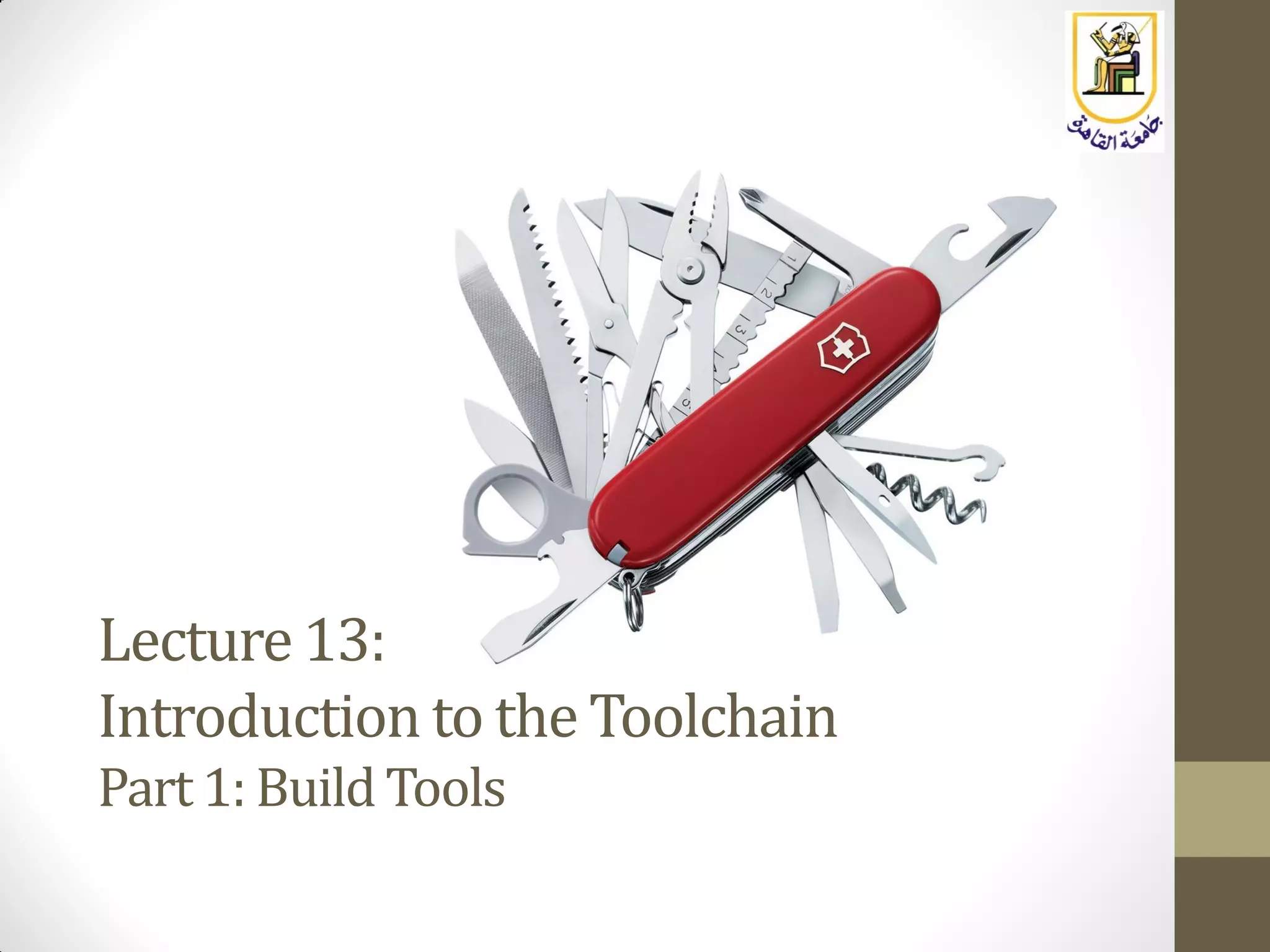
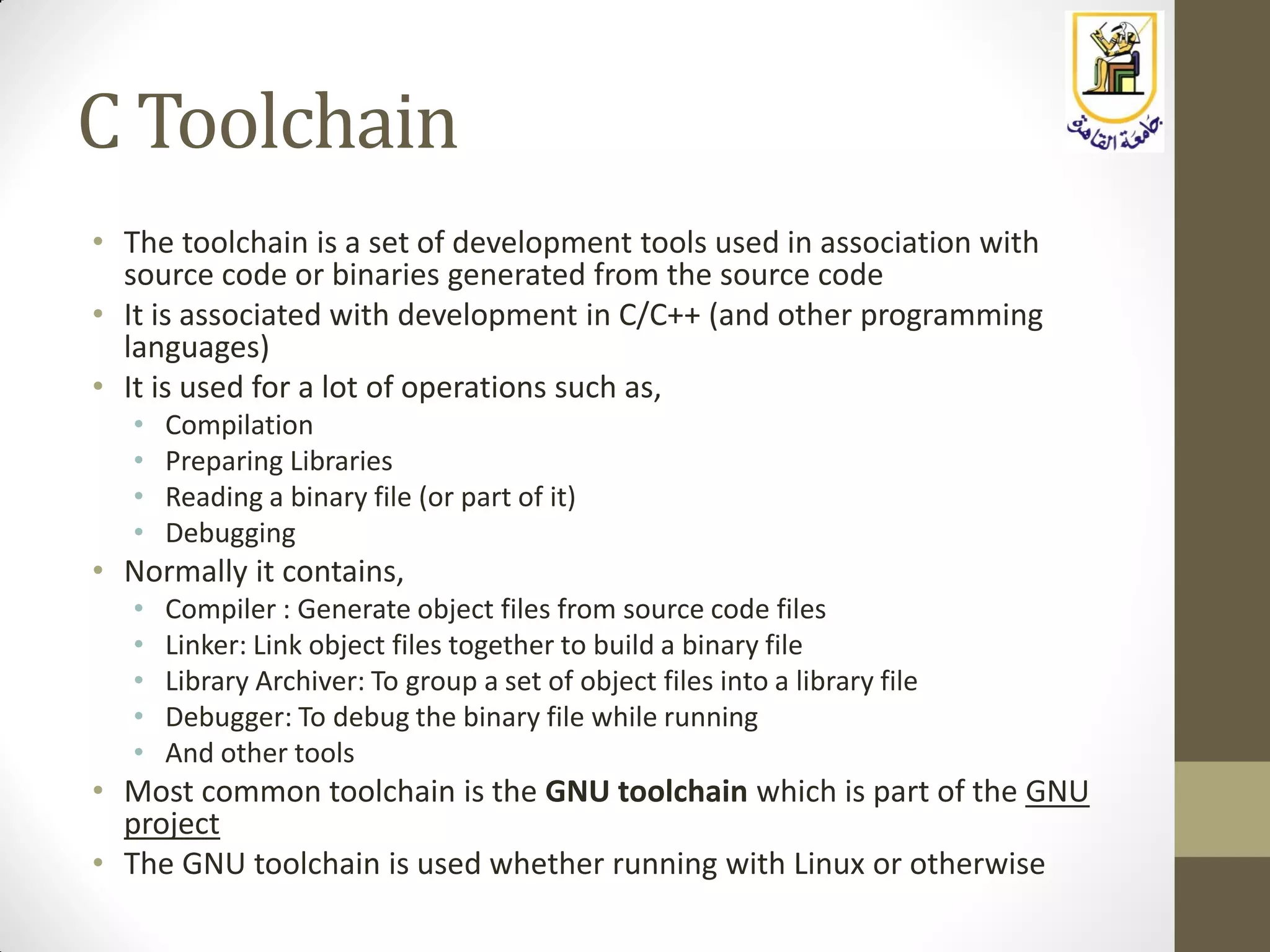
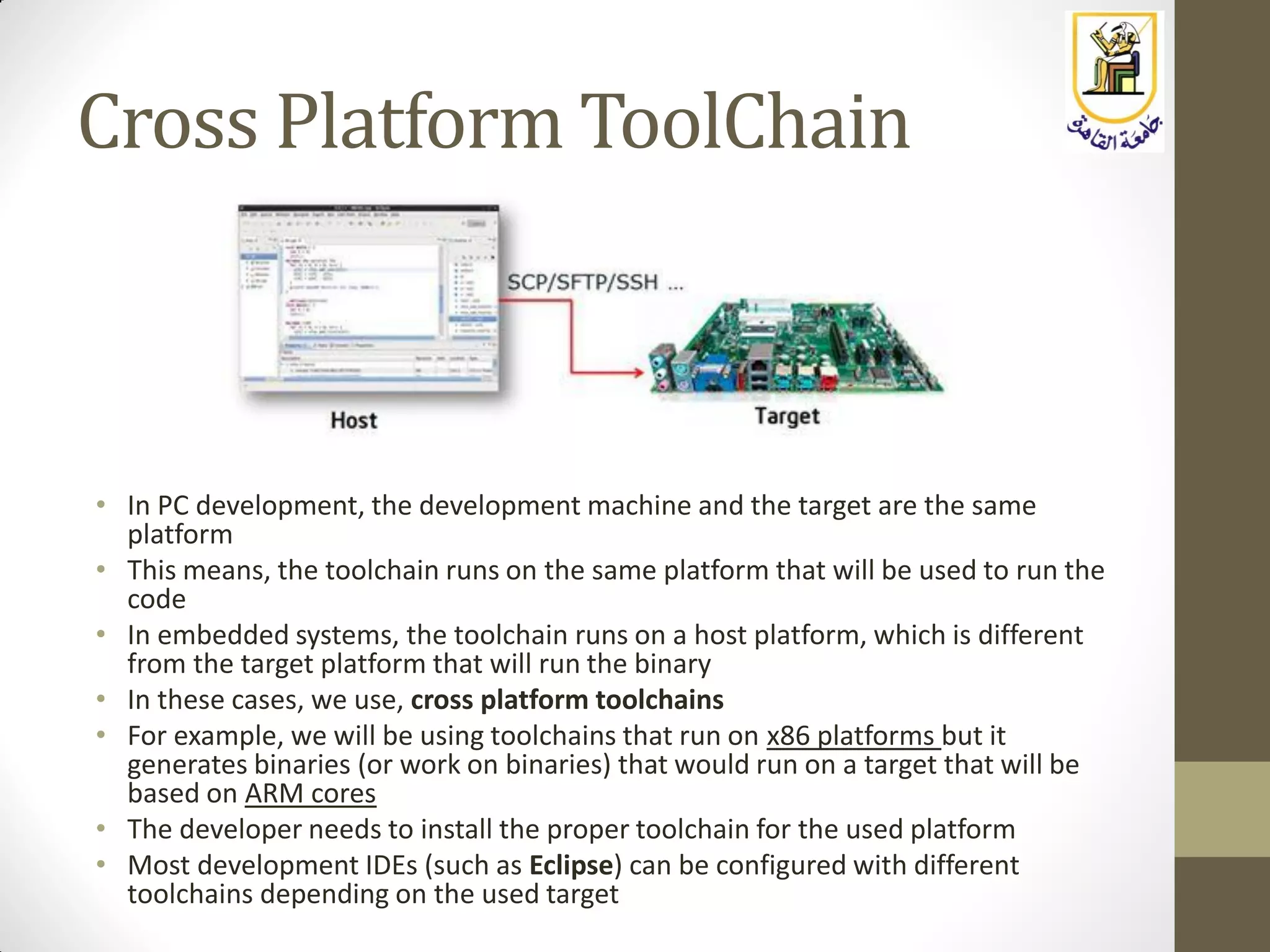
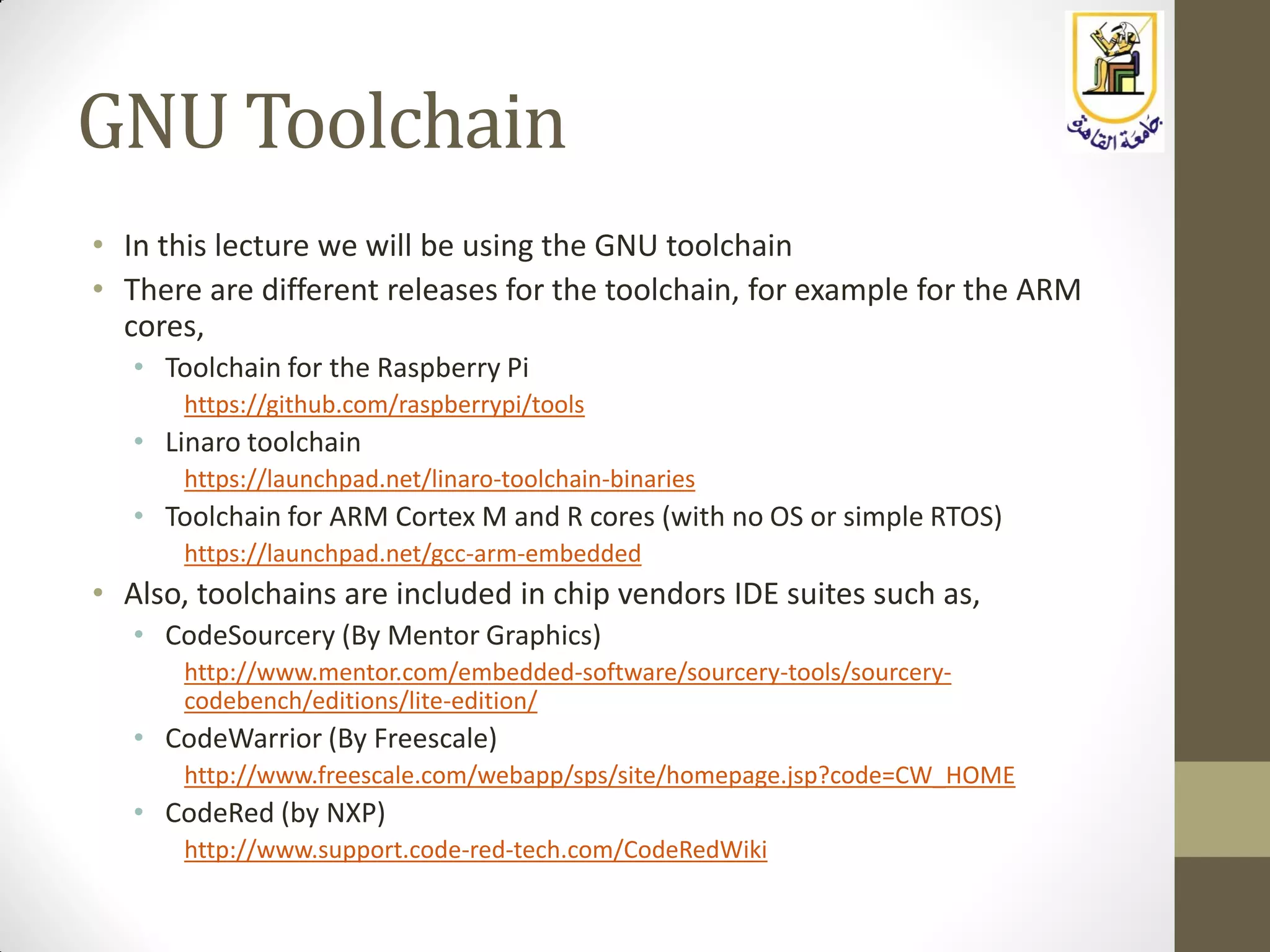
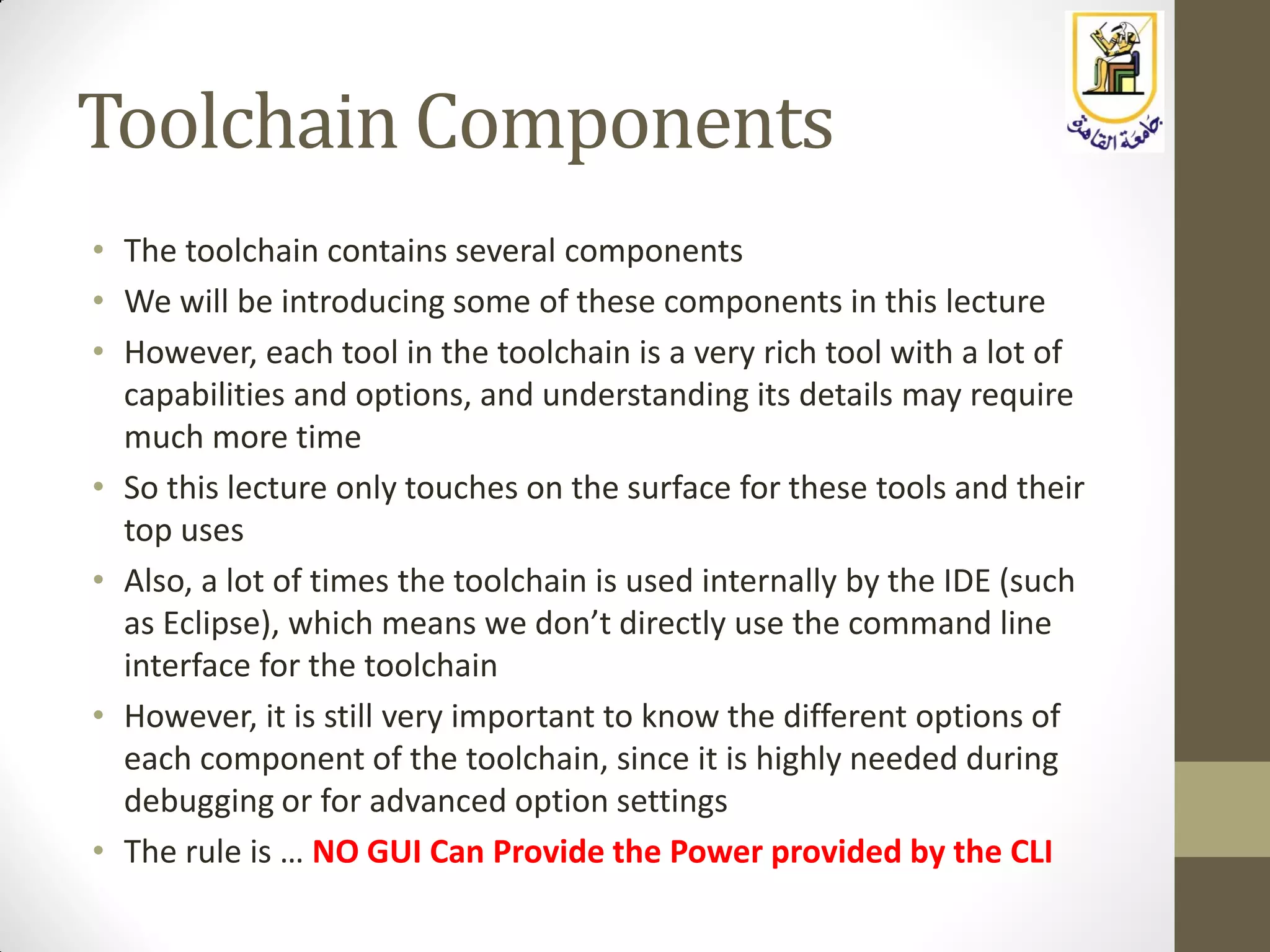
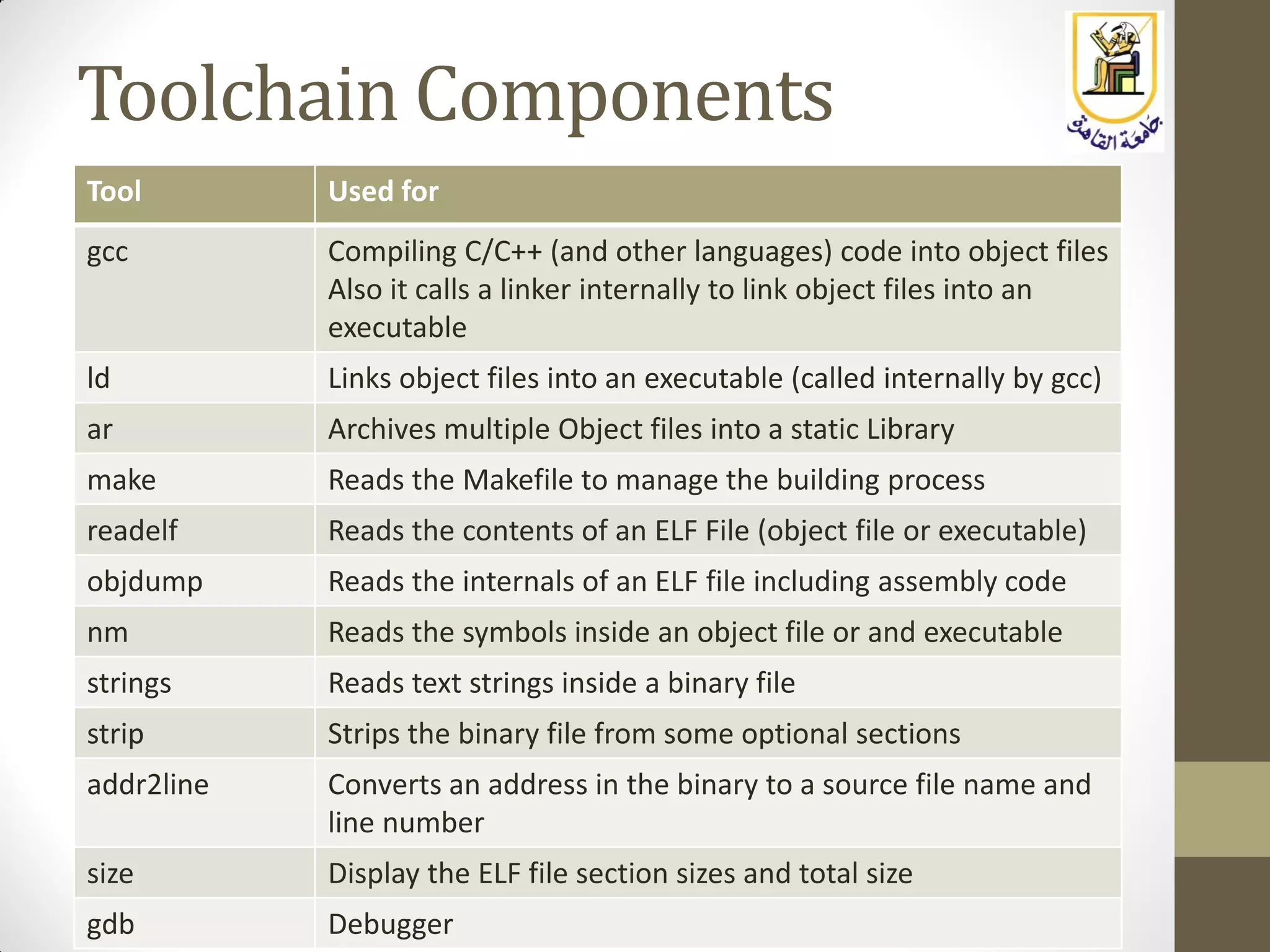

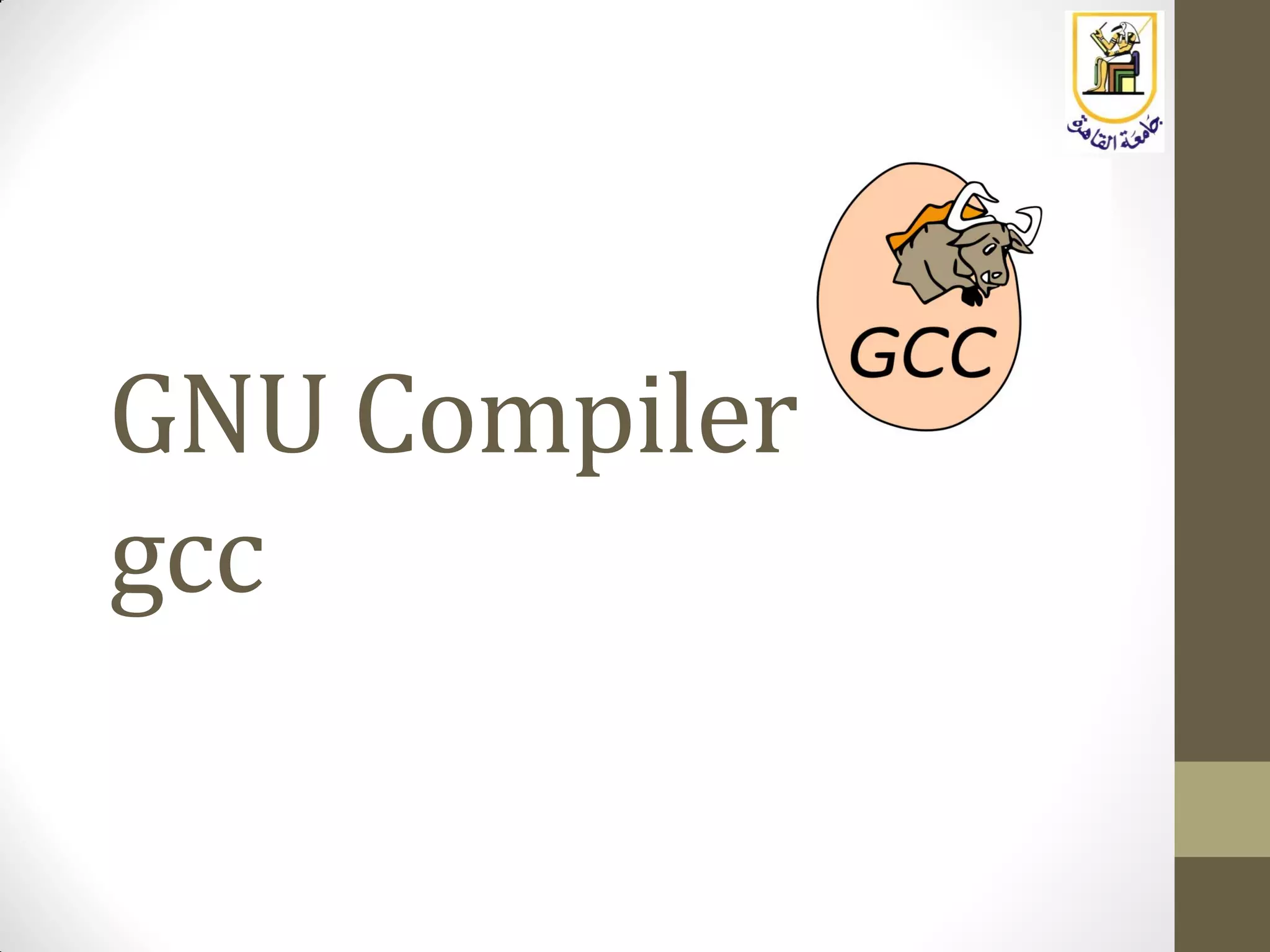
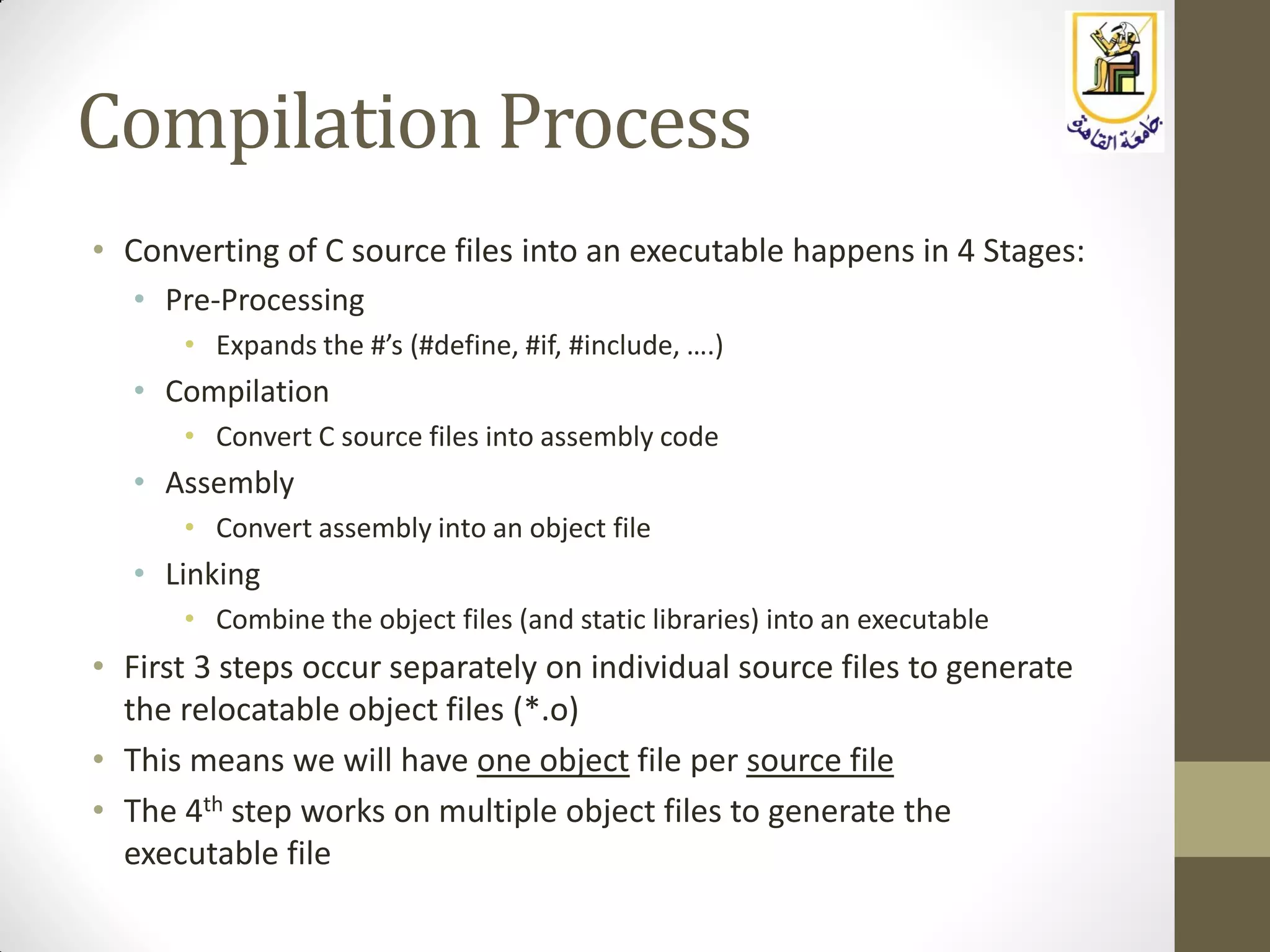
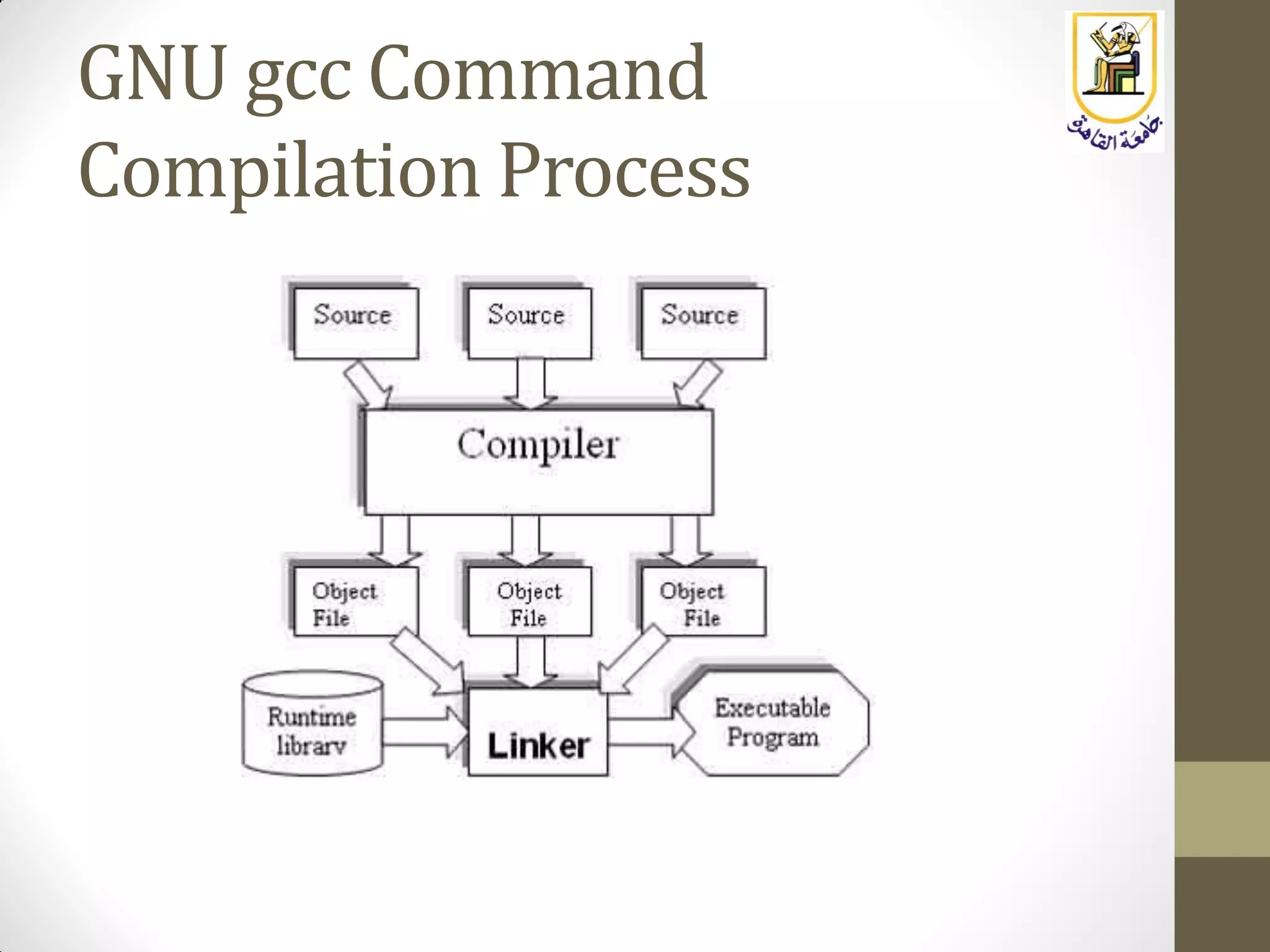
![GNU gcc Command
Basic Usages
$ gcc [options] <files to work on>
• To perform complete compilation process of the main.c source
$ gcc main.c
This command will generate the a.out executable (assuming the program is
composed of a single file)
• To change the name of the generated executable
$ gcc main.c -o test
This command will generate an executable with the name test
• To specify the Include path (path for header files)
$ gcc main.c -I/usr/share/include -I. -I./inc/ -I../../inc
• To enable all warning during compilation process
$ gcc -Wall main.c -o test
• To convert warnings into errors
$ gcc -Wall -Werror main.c -o test
• To pass options to gcc in a file (instead of in the command)
$ gcc main.c @options-file
Where options-file is a text file that will contain the required options](https://image.slidesharecdn.com/cucmp445lec13introductiontotoolchain1-150520170927-lva1-app6891/75/Embedded-Systems-Lecture-13-Introduction-to-GNU-Toolchain-Build-Tools-12-2048.jpg)
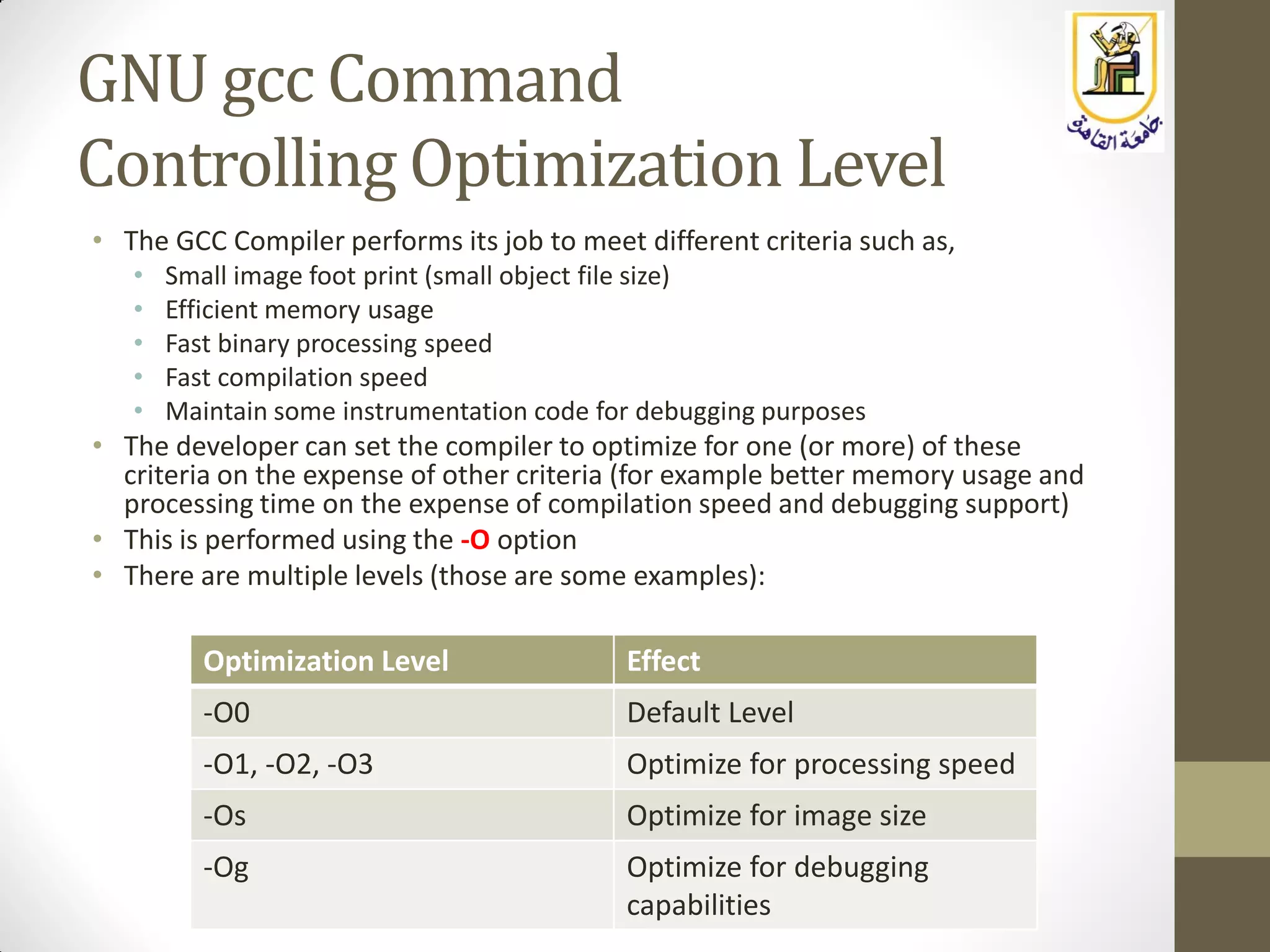

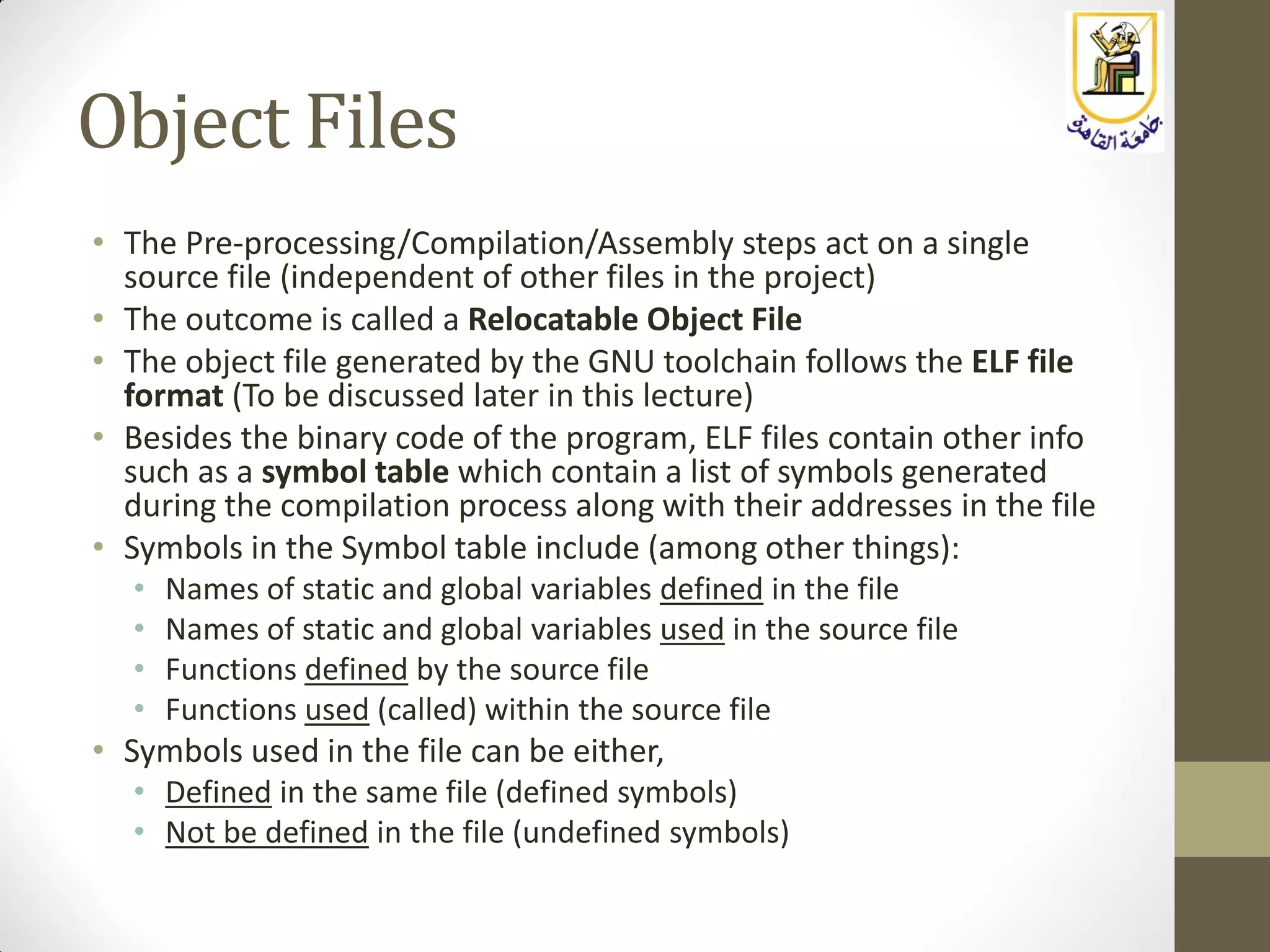
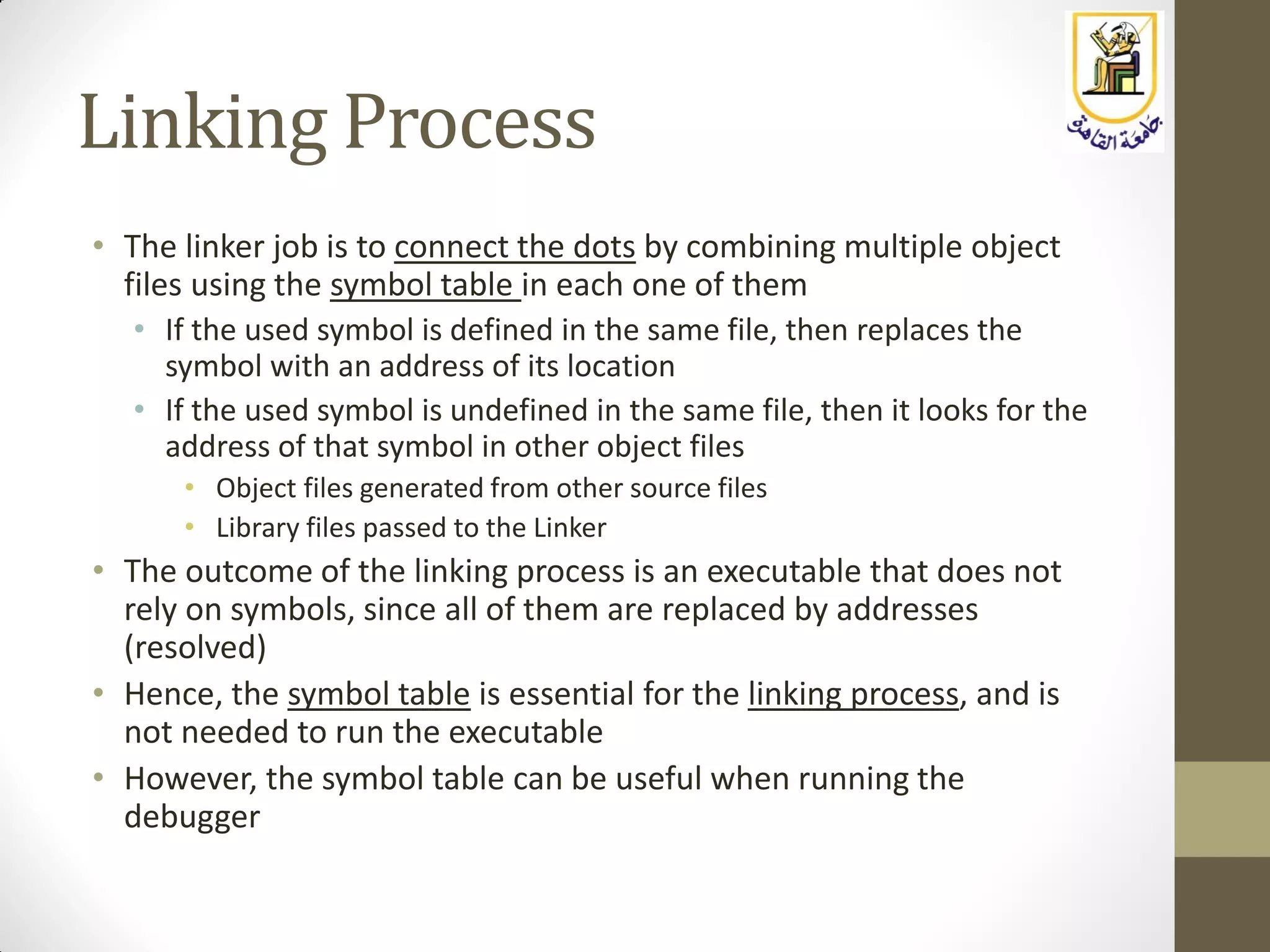
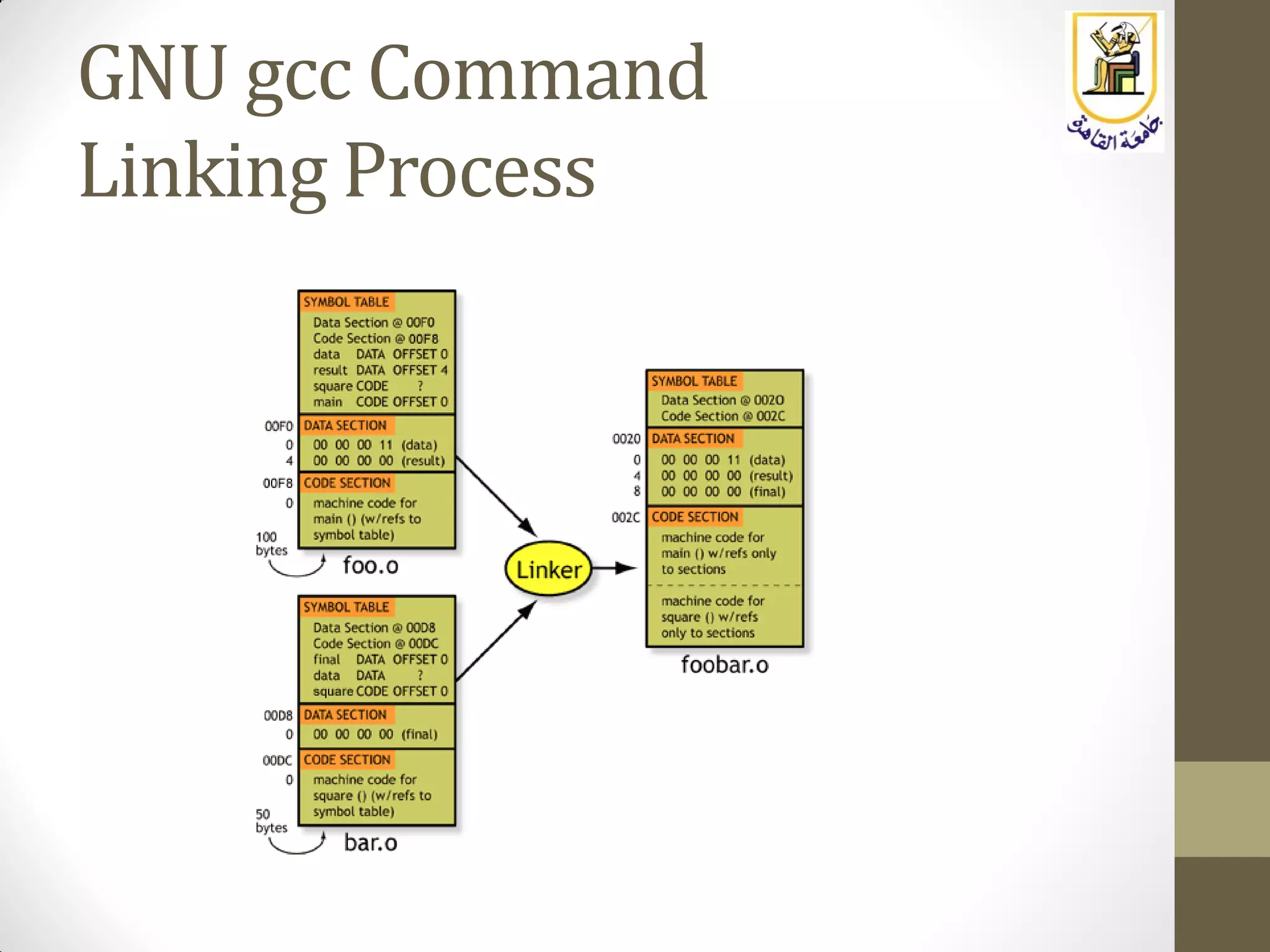
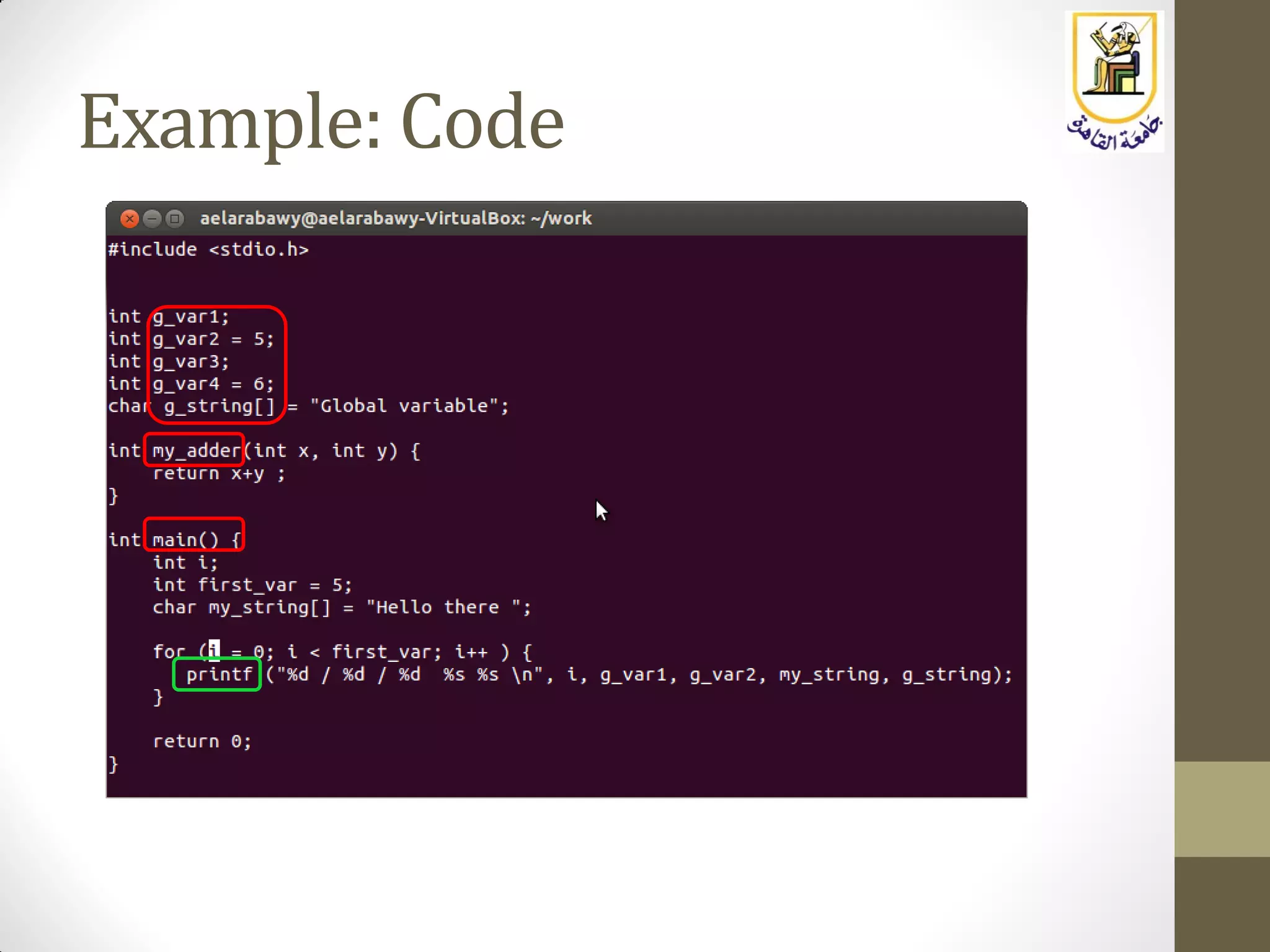
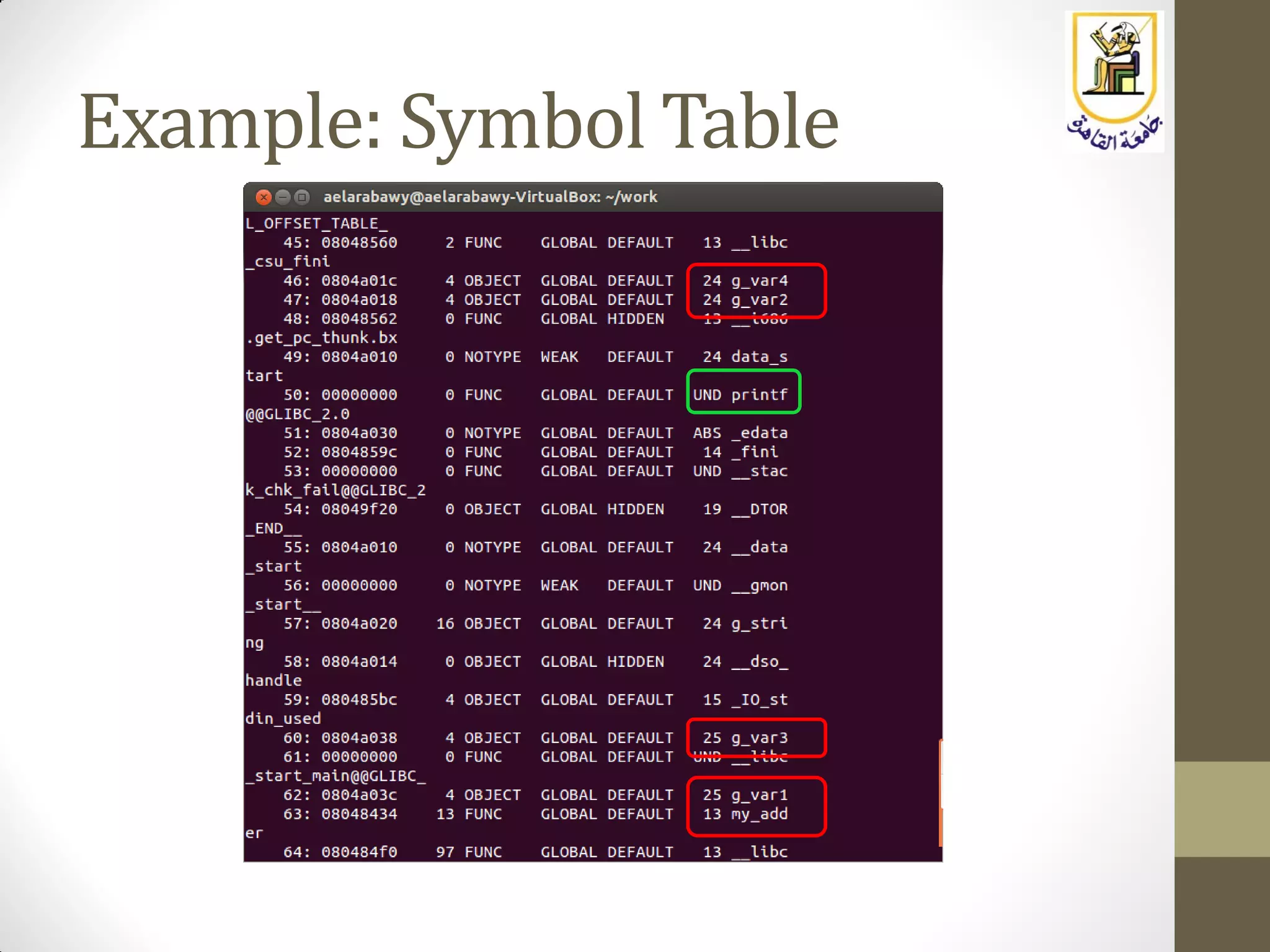
![Linking Process
(ld Command)
$ ld [options] <object file(s)>
• In GNU, the linking is performed using the ld tool
• Examples:
$ ld file1.o file2.o main.o
$ ld -o my-bin-file file1.o file2.o main.o
• However, no need to call it directly, since gcc calls it internally
$ gcc file1.o file2.o main.o
$ gcc -o my-bin-file file1.o file2.o main.o
• Also, gcc can perform linking as part of its full handling of source
files
$ gcc -Wall file1.c file2.c main.c -o my-bin-file
• Note: It is recommended to use gcc and not ld directly, since gcc will
take care of some details, that the developer will need to handle
himself if using ld directly](https://image.slidesharecdn.com/cucmp445lec13introductiontotoolchain1-150520170927-lva1-app6891/75/Embedded-Systems-Lecture-13-Introduction-to-GNU-Toolchain-Build-Tools-20-2048.jpg)
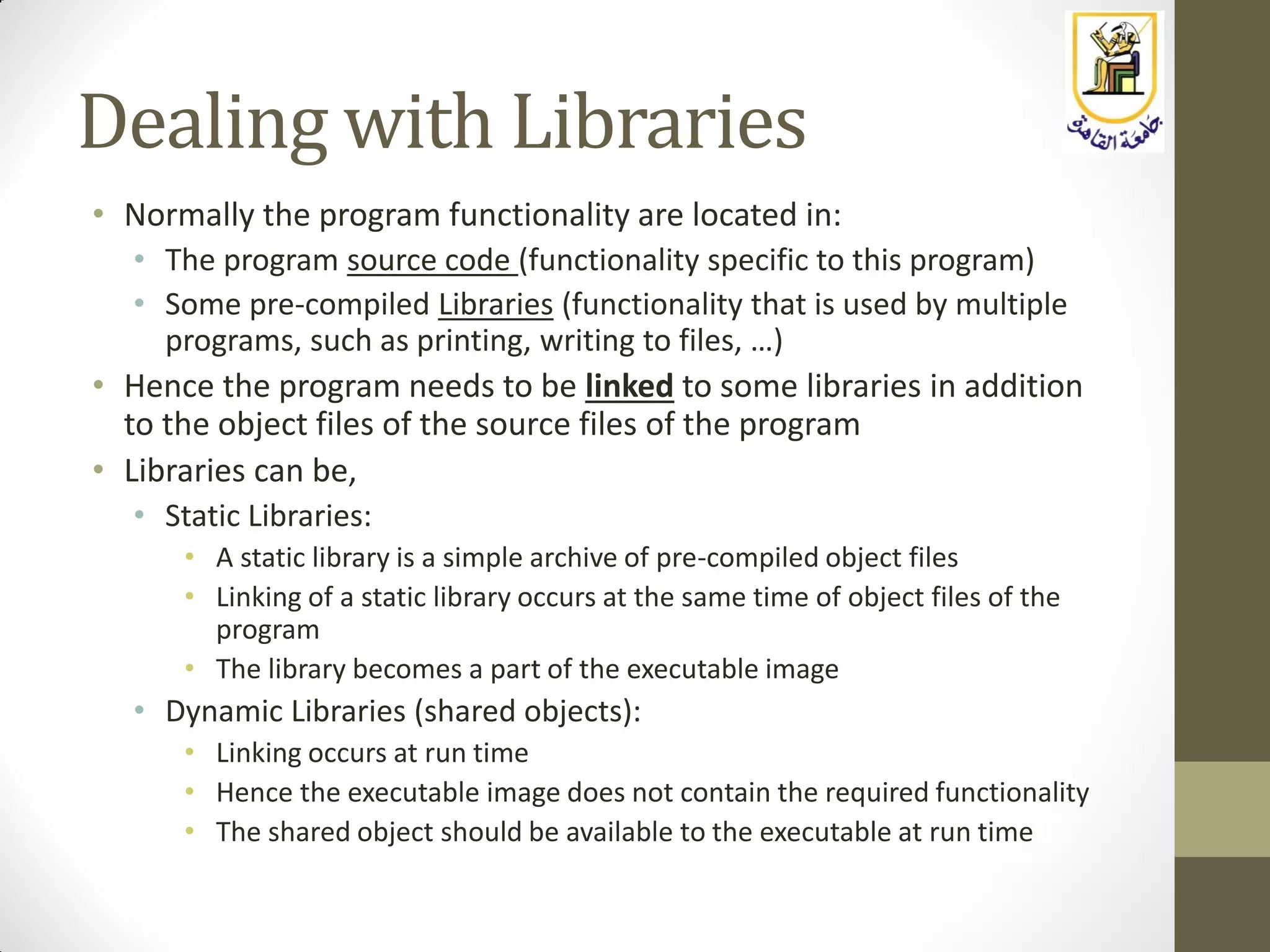

![Creating a Static Library
(ar Command)
$ ar [options] <library name> <object files>
• The ar command is used to create or manage static library files
• The static library is a simple archive of pre-compiled object files
• Note that library object files should not contain a main function
• Static library names should should start with “lib” and end with “.a”
such as: libmath.a , libcontrol.a, libvision.a
• To create a static library file
$ ar rcs libmylib.a file1.o file2.o
• To add another object file to the library
$ ar r libmylib.a file3.o
• To remove an object file from the library
$ ar d libmylib.a file3.o
• To view the object files in the library
$ ar t libmylib.a
• To extract object files from the library
$ ar x libmylib.a](https://image.slidesharecdn.com/cucmp445lec13introductiontotoolchain1-150520170927-lva1-app6891/75/Embedded-Systems-Lecture-13-Introduction-to-GNU-Toolchain-Build-Tools-23-2048.jpg)

